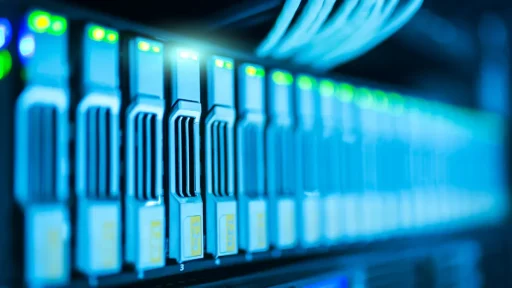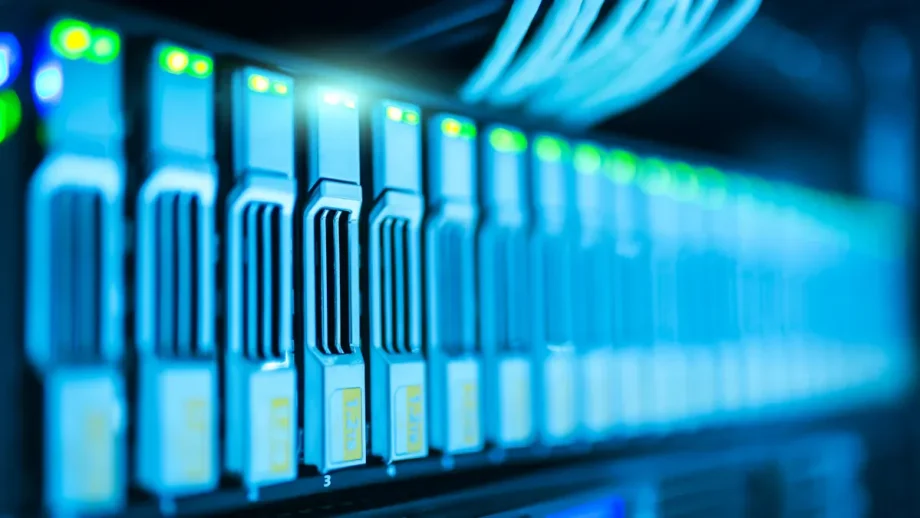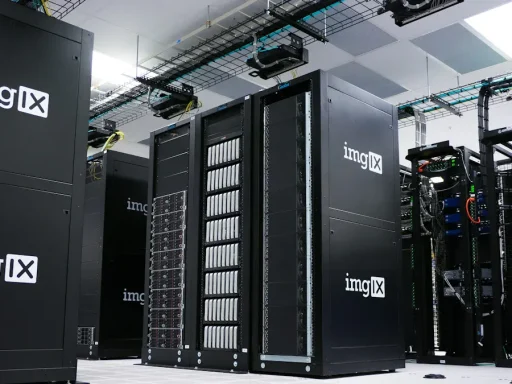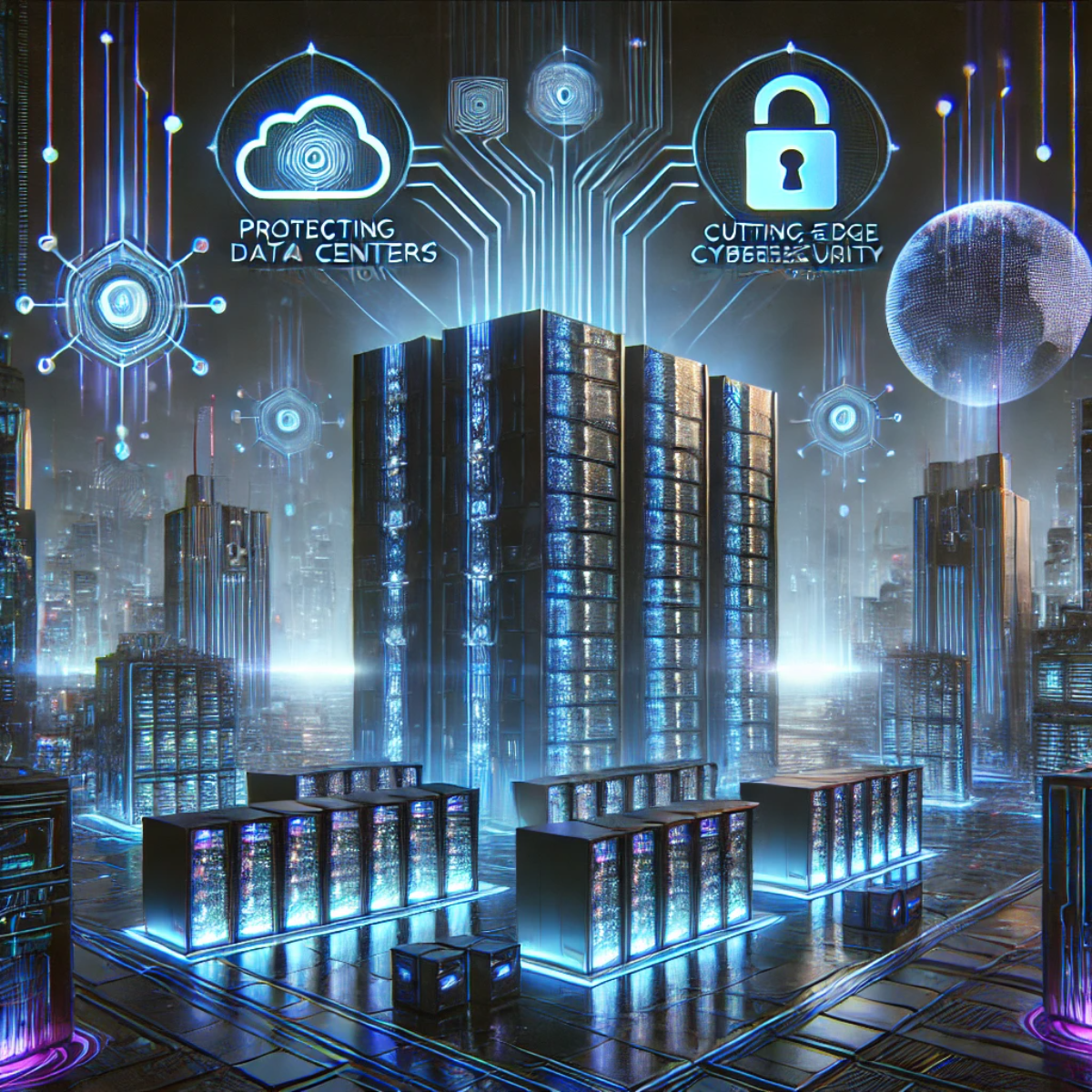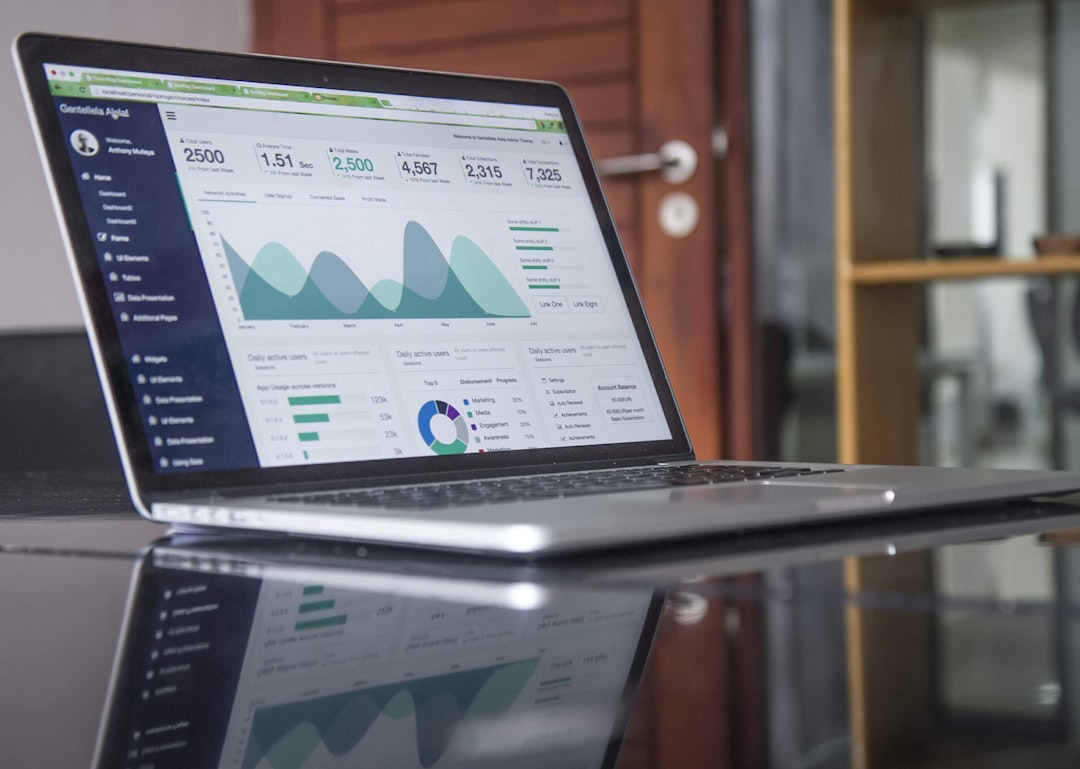Cloud vs. Colocation: Which Data Storage Solution is Right for Your Business?
The rapid development and adoption of technology have birthed diverse data storage solutions, pushing businesses to carefully evaluate their options. Amongst the prevalent choices are cloud computing and colocation services. This article intends to dissect these options, assess their pros and cons, and help you determine the ideal data storage strategy for your business.
Understanding Cloud Computing and Colocation Services
In today’s rapidly evolving digital landscape, understanding the foundational concepts of cloud computing and colocation services is your gateway to selecting the optimal data storage solutions for your business. Both options offer unique benefits catering to different organizational needs.
Cloud Computing: Picture cloud computing as your friendly neighborhood server farm in the sky, where resources are infinitely scalable and you only pay for what you eat—kind of like an all-you-can-eat buffet, but for data. Here, businesses can tap into vast pools of shared data center resources over the internet. With cloud computing, you’re granted flexibility through a variety of options ranging from public clouds—think bustling global markets open to all—to private clouds that are more like exclusive VIP events, available to only selected guests. Then there’s the pièce de résistance: hybrid cloud solutions, blending the best of both worlds for those who refuse to compromise. As per Gartner, enterprise IT spending on public cloud services will surpass traditional IT spending by 2025, indicating the shifting landscape toward cloud-based solutions.
Colocation Services: For those who cling to a sense of control like a dog to a favorite bone, colocation services might be your calling. This solution allows you to house your critical IT infrastructure—think server racks—in a third-party data center. It’s akin to renting space in a swanky penthouse: you get access to all the amenities of advanced data center facilities without the headache of maintenance. You can enjoy reliable cooling solutions, redundant power supply, and enhanced data security while keeping your hand firmly on the steering wheel of your IT operations. According to a report by MarketWatch, the global colocation market size was valued at $48.26 billion in 2020 and is expected to grow to $109.29 billion by 2027, emphasizing the sustained relevance and demand for colocation services.
Deciding between cloud computing and colocation services truly boils down to understanding your unique business demands and how each solution aligns with those needs. As renowned futurist Alvin Toffler remarked, “The illiterate of the 21st century will not be those who cannot read and write, but those who cannot learn, unlearn, and relearn.” Embracing the right technology for your business is not just about staying informed; it’s about staying ahead.
Key Differences Between Cloud and Colocation
When deciding between cloud and colocation for your data storage solutions, it’s crucial to understand the key differences between these two approaches. Let’s dive in, shall we?
IT Infrastructure Management: In the realm of data centers, cloud computing resembles a magical land where all IT resources are managed behind the scenes. Cloud providers take care of software updates, patching, and hardware management – you just sit back and enjoy the ride. On the flip side, colocation is the ‘DIY’ project of IT infrastructure. You’re responsible for housing your physical servers in someone else’s server farm, tackling hardware issues, and screaming internally when something breaks at 3 AM.
Scalability and Flexibility: Picture this: your business is growing faster than a toddler hyped up on sugar. With cloud solutions, scaling up is as easy as baking a ready-to-eat cake – more computing power is just a few clicks away. Colocation, though, is akin to putting together a jigsaw puzzle without knowing if you have all the pieces. Need more space? Get ready for some server rack Tetris! While cloud gives you elastic scalability, colocation demands physical expansion, peppered with some exercise as you lug equipment around.
Cost: The beauty of cloud computing lies in its utility-based pricing model. Think of it as the Netflix model of IT: pay a monthly fee, and you can indulge in unlimited binge-watching of servers. However, the cost can grow if usage spikes, much like your binge-watching habits before a work deadline. Colocation involves upfront expenditures on hardware, and your wallet will feel the pinch with ongoing expenses for colocation services and facility maintenance. In short, with cloud, you pay for flexibility; with colocation, you invest in control.
Both cloud and colocation have their own perks and challenges, and the right choice often depends on your specific business needs. Whether you’re opting for the flexibility of cloud hosting or the control of owning server racks in colocation, make sure your decision aligns with your IT and business strategies. Quincy Larson, founder of freeCodeCamp, once said,
“Choose a job you love, and you’ll never have to work a day in your life.” Similarly, choose a data storage solution that aligns with your business goals, and you’ll have less tech headaches to contend with.”
Pros and Cons of Cloud Computing
In the bustling world of data centers, cloud computing stands as a revolutionary force, offering both benefits and challenges for businesses seeking robust data storage solutions. Let’s dive into the pros and cons, and have a little fun while we’re at it.
Pros:
- High Availability: The cloud ensures your data is always accessible, much like that one friend who never seems to sleep. For businesses, typical SLAs promise over 99.9% uptime, keeping your operations running smoothly.
- Easy Scalability: Just as you might have to buy a bigger waistband after the holidays, cloud solutions effortlessly expand with your business needs, thanks to flexible storage and compute resources.
- Disaster Recovery Options: According to a report by Gartner, organizations without effective disaster recovery stand to suffer greater losses. With automated backups and failover systems, the cloud acts as your business’s safety net, ensuring you bounce back from any missteps without melodrama akin to a classic soap opera.
- No Need for Physical Space: Forget about having to jam servers into that dusty corner of the office. With cloud computing, physical hardware concerns, including cooling solutions and server maintenance, are discretely managed off-site.
Cons:
- Data Security Concerns: While the cloud keeps your data safe from your cat—unlike that vase on the coffee table—it also opens potential cybersecurity challenges and unauthorized access risks.
- Potential Cloud Service Outages: Even the cloud has its off days. Although rare, outages do happen and can cause temporary disruptions. Remember the AWS crash of 2017? It left many scrambling as websites went dark for hours.
- Ongoing Costs: Much like that subscription service you forgot you signed up for, cloud costs can sneakily add up as you consume more resources or additional services, sometimes rivaling traditional IT infrastructure expenses.
In an era where data centers are the unsung heroes of digital transformation, cloud computing plays a compelling role. However, businesses must weigh these pros and cons meticulously to find their perfect fit in the IT ecosystem.
“Cloud computing is not only the future of computing, but the present and the entire past of computing.” – Larry Ellison, co-founder of Oracle Corporation
Pros and Cons of Colocation
When it comes to data storage solutions, colocation emerges as a viable contender, presenting a mix of attractive benefits and notable challenges. Let’s dig into what makes colocation a compelling choice and where it might fall short.
Pros:
- Control Over Server Maintenance: Colocation allows businesses to maintain their own data center hardware such as server racks, giving IT teams the flexibility to directly manage performance, updates, and server virtualization. As the saying goes, “If you want something done right, do it yourself!”
- Improved Data Security: By retaining physical ownership of your data storage, you can bypass potential vulnerabilities associated with third-party cloud computing services. It’s like holding the keys to your kingdom—priceless.
- Data Sovereignty: Colocation facilities often offer the ability to choose specific geographic locations, ensuring your data complies with regional data sovereignty laws. This can be crucial for businesses operating under strict regulatory standards, such as GDPR in Europe.
Cons:
- Higher Initial Investment: Setting up in a colocation facility can be costly, with upfront expenses including hardware, server racks, and customized cooling solutions. Think of it as investing in real estate, with peace of mind and security as the long-term payoff.
- Need for IT Support Services: Unlike cloud services that offer managed hosting, colocation demands in-house IT expertise or reliance on third-party IT support services for server maintenance and disaster recovery solutions.
- Dependency on Location-Specific Infrastructure: Colocating often ties businesses to specific location-based infrastructure, such as redundant power supply systems and network connectivity. As a result, moving or scaling operations can present logistical hurdles and require thorough data center migration planning.
While colocation provides a unique mix of control and data security, it’s not without its logistical and financial requirements. Businesses must introspect on their IT strategies, cybersecurity needs, and financial preparedness to make the choice that’s as solid as their server’s uptime guarantee.
Factors to Consider When Choosing Between Cloud and Colocation
Choosing between cloud computing and colocation services is akin to choosing between a bustling city life and a serene countryside retreat. Each has its perks, and the decision often boils down to specific needs rather than a one-size-fits-all solution. Here are crucial factors to weigh before taking the plunge into the digital abyss:
- Business Size and Growth: For smaller enterprises or businesses with erratic growth patterns, the cloud offers the agility of a yoga master. According to Gartner, by 2025, upwards of 85% of enterprises will adopt a cloud-first strategy, highlighting the flexibility and scalability that young companies often crave. However, don’t let the scalability bug bite without caution. Over-committing to the cloud can sometimes feel like ‘wearing a parachute when merely jumping into a pool.’
- Data Security Requirements: For the security-savvy who keep their data under lock and key (and throw away the key!), colocation might be the knight in shining armor. Colocation facilities offer robust physical protection and environmental controls. They provide a tangible safeguard for sensitive data, critical for industries like finance and healthcare. In a rapidly evolving threat landscape, “Security is an investment, not an expense,” as eloquently put by Forbes.
- Budget Constraints: The financial see-saw of cloud vs. colocation is a balancing act of capital expenditures (CapEx) versus operational expenditures (OpEx). Cloud solutions often come with recurring costs reminiscent of that surprise gym membership fee you forgot you signed up for. Meanwhile, colocation involves upfront investments in a server rack and ongoing facility management. It’s like choosing between renting or buying a house—the long-term costs and benefits need careful consideration.
Deciding between cloud and colocation is not just a game of eeny, meeny, miny, moe. It’s about aligning your choice with your business’s unique needs and goals. As the wise folks at Harvard Business Review note, “One size fits all is a myth in IT solutions.” Equip yourself with the right data storage solutions for a prosperous digital journey.
Final Thoughts: Choosing the Right Data Storage Solution for Your Business
Ultimately, the choice between cloud computing and colocation services depends on your business needs, resources, and priorities. Both options have their strengths and potential limitations. The right solution will align with your enterprise IT strategies, ensuring not only data security and compliance but scalability and efficiency in data management.
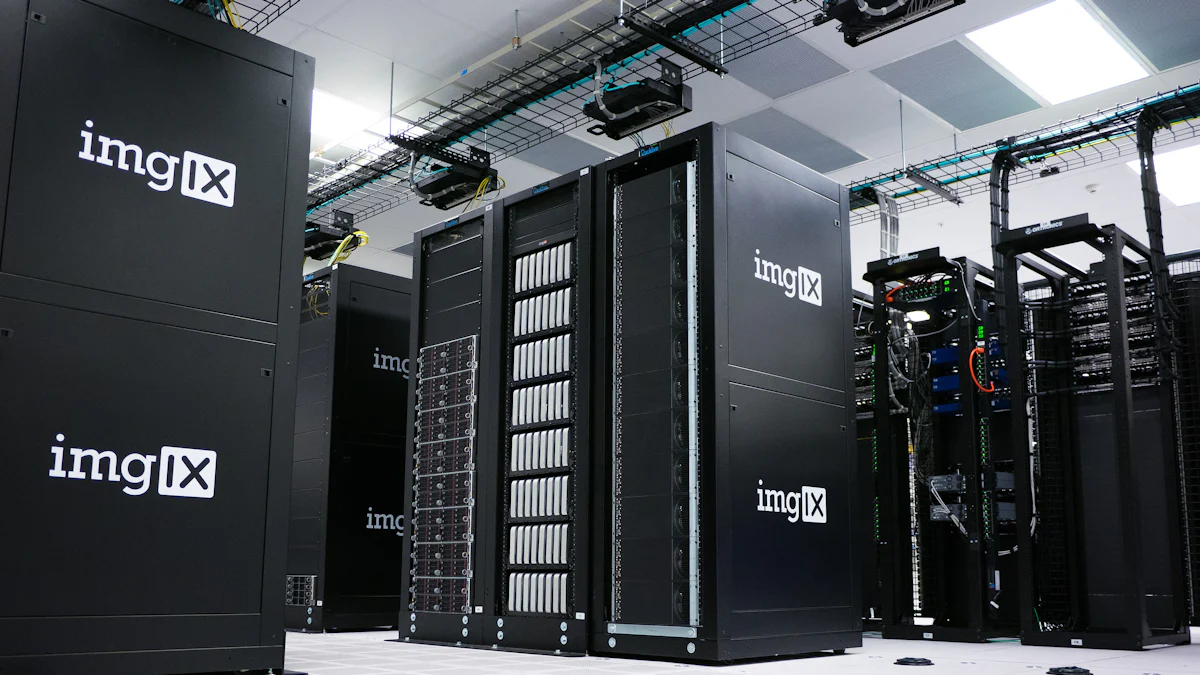

Data center and colocation services present a comprehensive solution for businesses aiming for secure and efficient infrastructure. By utilizing a colocation data center, companies can rent space for their servers and networking equipment within a third-party facility. This arrangement provides premium data center and colocation services, ensuring optimal performance and security. Colocation data centers are equipped with advanced cooling systems, power redundancy, and robust physical security measures. The global data center and colocation market is experiencing rapid growth, with a projected compound annual growth rate of 14.2% through 2030. Businesses are increasingly turning to data center and colocation solutions to fulfill their needs for reliable and scalable infrastructure.
Understanding Colocation Data Centers
Definition and Purpose
What is a Colocation Data Center?
A colocation data center serves as a facility where businesses can rent space to house their servers and networking equipment. The colo data center architecture provides essential services such as power, cooling, and network connectivity. Businesses benefit from the data center colocation facility by avoiding the capital expenses of building and maintaining their own infrastructure. The colo offers a secure environment with advanced security measures to protect sensitive data.
Purpose and Functionality
The primary purpose of a colocation data center is to provide a reliable and scalable environment for IT infrastructure. Companies use colocation data services to ensure high levels of uptime and performance. The colo supports businesses by offering redundant power systems, backup generators, and multiple network connections. These features enhance the reliability of the data center. Colocation allows organizations to focus on their core operations while the colo manages critical systems.
Types of Colocation Data Centers
Retail Colocation
Retail colocation caters to businesses that require smaller spaces for their IT equipment. The colo data center offers individual racks or cabinets for rent. This type of colocation data service suits small to medium-sized enterprises. The data center colocation facility provides shared resources, including power and cooling, which helps reduce costs. Retail colocation offers flexibility and scalability for growing businesses.
Wholesale Colocation
Wholesale colocation targets larger enterprises with significant IT infrastructure needs. The colo data center provides entire suites or large spaces for rent. This option benefits companies that require extensive data center infrastructure management. The colo offers dedicated resources, ensuring high levels of security and performance. Wholesale colocation enables businesses to scale their operations efficiently.
Benefits of Colocation Data Centers
Cost Efficiency
Shared Infrastructure Costs
Colocation data centers provide significant cost savings through shared infrastructure. Businesses typically avoid the expenses associated with building and maintaining a private data center. Colocation services include access to shared power, cooling, and network resources. This setup allows for efficient use of energy and facilities. Colocation offers space that businesses can utilize without incurring high capital costs. The shared model ensures that companies only pay for the resources they need. This approach optimizes data center management and reduces unnecessary expenditures.
Reduced Capital Expenditure
Colocation services offer reduced capital expenditure by eliminating the need for upfront investments in infrastructure. Businesses avoid the financial burden of constructing and equipping a data center. Colocation data centers provide a ready-made environment with all necessary facilities. This arrangement allows companies to allocate resources to other critical areas. The cost-effective nature of colocation services enhances business efficiency. Companies can scale their operations without significant financial strain. The flexibility of colocation data center models supports growth and expansion.
Enhanced Security and Reliability
Physical Security Measures
Colocation data centers maintain robust physical security measures to protect sensitive data. Facilities typically employ advanced security protocols, including surveillance cameras and biometric access controls. These measures ensure that only authorized personnel can access the data center. Colocation centers maintain strict security standards to safeguard client data. The integration of hybrid data center security further enhances protection. Businesses benefit from the peace of mind that comes with secure data center infrastructure management.
Redundancy and Uptime
Colocation data centers provide redundancy and high uptime levels, ensuring reliable service. Facilities incorporate backup power systems and redundant network connections. This setup minimizes the risk of downtime and data loss. Colocation data centers offer integrated data center management solutions that enhance reliability. The use of energy-efficient systems contributes to sustainable operations. Colocation services ensure that businesses maintain continuous access to their data. The commitment to data center tier standards guarantees optimal performance.
Comparisons with Other Data Center Solutions
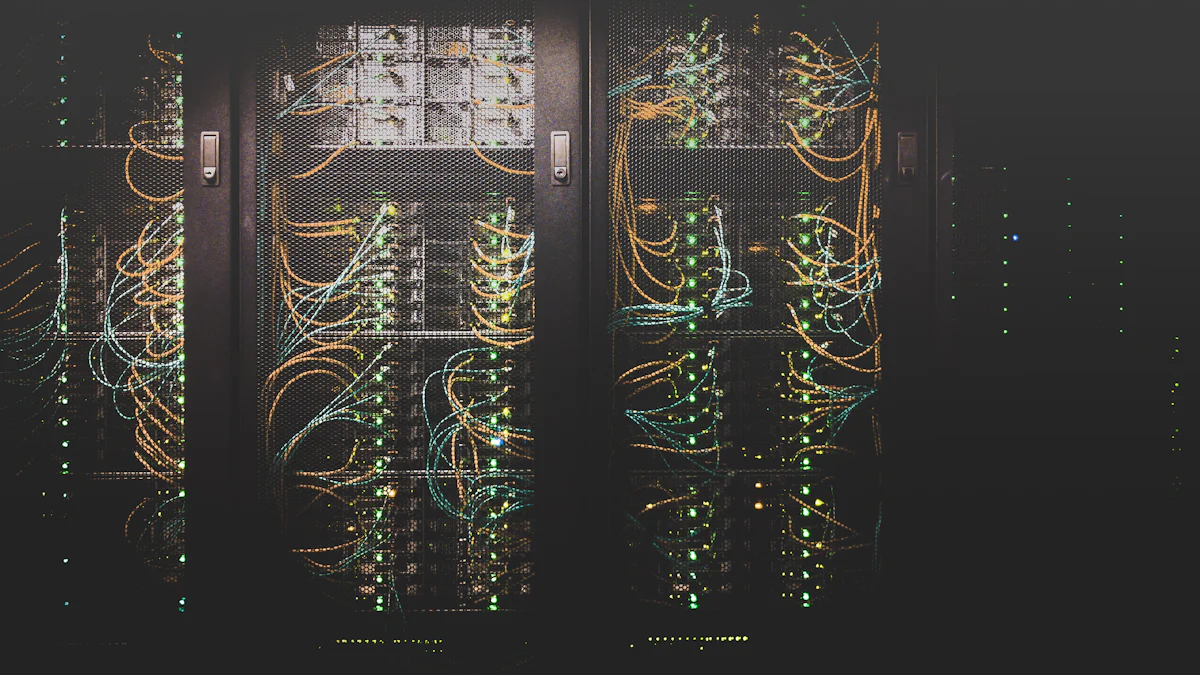

Colocation vs. Cloud Data Centers
Cost Comparison
Colocation offers a cost-effective solution for businesses seeking to manage their infrastructure. Companies can rent Rackspace and utilize shared resources, which reduces expenses. Colocation eliminates the need for significant upfront investments in hardware. Businesses benefit from lower CAPEX by avoiding the costs associated with building a private data center. Cloud solutions, however, operate on a subscription model. Companies pay for services based on usage. This model eliminates hardware costs but may lead to higher long-term expenses. Rackspace Managed Colocation provides a balance between cost efficiency and control over infrastructure.
Flexibility and Scalability
Colocation data centers offer geographic flexibility. Businesses can choose locations that align with their operational needs. Colocation facilities provide scalability by allowing companies to expand their Rackspace as needed. This flexibility supports business growth without significant disruptions. Cloud solutions, on the other hand, offer software-based scalability. Companies can quickly adjust resources based on demand. The Cloud provides a flexible environment for businesses with fluctuating needs. Both Colocation and Cloud solutions offer unique advantages in terms of scalability.
Colocation vs. On-Premises Data Centers
Maintenance and Management
Colocation reduces the burden of maintenance and management for businesses. Facilities handle essential services such as power, cooling, and security. Companies can focus on core operations while the colo manages infrastructure. Rackspace Managed services enhance efficiency by providing expert support. On-premises data centers require significant resources for maintenance. Businesses must invest in personnel and equipment to ensure smooth operations. Colocation offers a more streamlined approach to infrastructure management.
Infrastructure Control
Colocation provides businesses with complete control over their servers and equipment. Companies maintain ownership of their hardware while benefiting from shared facilities. Rackspace allows for customization and configuration based on specific needs. Tier III data centers ensure high levels of reliability and performance. On-premises solutions offer similar control but demand higher investments in infrastructure. Colocation strikes a balance between control and cost-effectiveness. Certification standards such as Tier III guarantee quality and reliability in colocation facilities.
Key Considerations for Choosing a Colocation Data Center
Location and Accessibility
Proximity to Business Operations
Proximity plays a crucial role in selecting a colocation data center. Businesses should choose a location near their primary operations. This choice reduces latency and improves data transfer speeds. A nearby data center allows for easier access to equipment and personnel. Quick access ensures efficient management and maintenance of servers. Proximity also aids in faster response times during emergencies.
Disaster Recovery and Risk Management
Colocation facilities must offer robust disaster recovery plans. These plans protect data from natural disasters and technical failures. Facilities should have redundant systems to ensure data safety. Risk management strategies include backup power and cooling systems. These features maintain operations during unexpected events. Colocation services provide cooling solutions to prevent overheating. Effective risk management minimizes potential downtime and data loss.
Service Level Agreements (SLAs)
Uptime Guarantees
Service Level Agreements define the performance standards of a colocation provider. Uptime guarantees are a critical component of these agreements. Providers must ensure high availability of data center services. Uptime guarantees typically range from 99.9% to 100%. Reliable uptime ensures continuous access to data and applications. Businesses should verify the provider’s track record for meeting these guarantees. Consistent uptime enhances business continuity and customer satisfaction.
Support and Maintenance Services
Colocation providers offer support and maintenance as part of their services. Expert technicians handle routine checks and emergency repairs. Providers ensure optimal performance of cooling and power systems. Regular maintenance prevents equipment failures and data loss. Support services include guidance on system configuration and optimization. Colocation Provider states, “Colocation customers are also typically responsible for the configuration and management of their systems.” Providers assist customers in maximizing the use of data center resources. Comprehensive support services contribute to efficient data center operations.
Colocation offers businesses a scalable and cost-effective solution for IT infrastructure needs. Companies can expand their networks without investing in additional hardware or real estate. Colocation provides flexibility and security, allowing organizations to adapt their IT infrastructure to changing demands. Businesses should consider colocation for future data center needs. The Check Point data center ensures robust security measures. Point data center security offers peace of mind for sensitive data. Check the benefits of colocation to make informed decisions. Check Point solutions enhance business operations. Check the options available to optimize infrastructure.
Cambridge Antibody Technology (CAT) was established in 1989 as a spin-off from the University of Cambridge. The company’s primary objective was to develop innovative antibody-based therapeutics for various diseases. CAT’s founders, Sir Greg Winter and Dr.
David Chiswell, were influential figures in antibody engineering and played a significant role in advancing technologies that transformed monoclonal antibody production. In 1990, CAT achieved a major breakthrough with the development of phage display technology. This innovation enabled rapid screening and selection of antibodies with high specificity and affinity for target antigens.
The technology facilitated the development of a new generation of therapeutic antibodies, leading to the creation of several successful drugs that have significantly impacted disease treatment. Throughout its history, CAT has remained at the forefront of antibody research and development, making substantial contributions to the biopharmaceutical industry. In 2006, AstraZeneca, a global biopharmaceutical company, acquired CAT, further strengthening its position as a key player in antibody technology.
Key Takeaways
- Cambridge Antibody Technology was founded in 1989 as a spin-out from the University of Cambridge, with a focus on developing therapeutic antibodies.
- Antibody research and development plays a crucial role in healthcare, as antibodies can be used to treat a wide range of diseases, including cancer, autoimmune disorders, and infectious diseases.
- Cambridge Antibody Technology has made significant innovations in antibody technology, including the development of the first fully human antibody therapeutic, adalimumab (Humira).
- The innovations by Cambridge Antibody Technology have had a profound impact on the biopharmaceutical industry, leading to the development of new and more effective treatments for various diseases.
- Collaborations and partnerships in antibody research and development are essential for advancing the field and bringing new therapies to market, and Cambridge Antibody Technology has engaged in numerous successful collaborations with pharmaceutical companies.
The Role of Antibody Research and Development in Healthcare
The Emergence of Monoclonal Antibodies
In recent years, there has been a growing interest in harnessing the power of antibodies for therapeutic purposes, leading to the development of a new class of drugs known as monoclonal antibodies. Monoclonal antibodies are highly specific and can be designed to target a wide range of disease-causing molecules, including cancer cells, inflammatory proteins, and infectious agents.
Targeted Therapy with Fewer Side Effects
These drugs have shown great promise in the treatment of various diseases, offering targeted therapy with fewer side effects compared to traditional treatments. The development of monoclonal antibodies has revolutionized the treatment of diseases such as cancer, autoimmune disorders, and infectious diseases. These drugs have significantly improved patient outcomes and have become an essential part of modern healthcare.
A Growing Demand for Innovative Therapeutics
As a result, there is a growing demand for innovative antibody-based therapeutics, driving continued research and development in this field.
Innovations and Breakthroughs in Antibody Technology by Cambridge Antibody Technology


CAT has been at the forefront of antibody technology innovation, making significant contributions to the development of novel therapeutic antibodies. One of CAT’s most notable innovations is the development of the humanization technology, which allows for the engineering of antibodies with human-like characteristics. This technology has been instrumental in reducing the immunogenicity of therapeutic antibodies, making them more effective and safer for use in patients.
In addition to humanization technology, CAT has also made significant advancements in antibody engineering and optimization. The company has developed proprietary platforms for antibody discovery and optimization, allowing for the rapid generation of high-affinity antibodies with desirable properties for therapeutic use. Furthermore, CAT has been a pioneer in the development of antibody-drug conjugates (ADCs), a novel class of targeted cancer therapies that combine the specificity of monoclonal antibodies with the cytotoxic effects of chemotherapy drugs.
These ADCs have shown great promise in the treatment of various types of cancer and have the potential to significantly improve patient outcomes.
The Impact of Cambridge Antibody Technology’s Innovations on the Biopharmaceutical Industry
CAT’s innovations in antibody technology have had a profound impact on the biopharmaceutical industry, leading to the development of several successful drugs that have transformed the treatment of various diseases. The company’s humanization technology has been widely adopted by biopharmaceutical companies, leading to the generation of a new generation of safer and more effective therapeutic antibodies. Furthermore, CAT’s contributions to antibody engineering and optimization have paved the way for the development of a wide range of novel antibody-based therapeutics.
These drugs have significantly expanded the treatment options available to patients, offering targeted therapy with fewer side effects compared to traditional treatments. CAT’s pioneering work in ADCs has also led to the development of several successful cancer therapies that have shown great promise in clinical trials. These drugs have the potential to significantly improve patient outcomes and have become an essential part of modern cancer treatment.
Collaborations and Partnerships in Antibody Research and Development
CAT has established numerous collaborations and partnerships with leading academic institutions, biopharmaceutical companies, and research organizations to advance antibody research and development. These collaborations have been instrumental in driving innovation and accelerating the development of novel antibody-based therapeutics. One notable collaboration is CAT’s partnership with AstraZeneca, which led to the acquisition of CAT in 2006.
This partnership has allowed CAT to leverage AstraZeneca’s resources and expertise to further advance its antibody technology platforms and accelerate the development of new drugs. In addition to its partnership with AstraZeneca, CAT has also collaborated with leading academic institutions such as the University of Cambridge and research organizations such as the Medical Research Council (MRC) to advance antibody research and development. These collaborations have led to several groundbreaking discoveries and have contributed to the advancement of antibody-based therapeutics.
Future Prospects and Developments in Antibody Technology by Cambridge Antibody Technology


Advancing Antibody Engineering and Optimization
The company is actively pursuing new innovations in antibody engineering, optimization, and drug delivery to further advance the field of antibody-based therapeutics. One area of focus for CAT is the development of novel antibody formats that offer improved pharmacokinetics and tissue penetration.
Enhancing Efficacy and Safety
These advancements have the potential to further enhance the efficacy and safety of therapeutic antibodies, leading to better patient outcomes.
Expanding ADC Technology into New Therapeutic Areas
Furthermore, CAT is also exploring new applications for its ADC technology, including the development of targeted therapies for other diseases beyond cancer. These efforts have the potential to expand the use of ADCs into new therapeutic areas, offering new treatment options for patients with unmet medical needs.
The Importance of Antibody Research and Development in Addressing Global Health Challenges
Antibody research and development play a crucial role in addressing global health challenges, including infectious diseases, cancer, autoimmune disorders, and other serious medical conditions. The development of novel antibody-based therapeutics offers targeted therapy with fewer side effects compared to traditional treatments, leading to improved patient outcomes and quality of life. Infectious diseases such as COVID-19 have highlighted the importance of antibody-based therapeutics in responding to global health crises.
Monoclonal antibodies have shown great promise in the treatment and prevention of COVID-19, offering a potential solution to combat the ongoing pandemic. Furthermore, antibody-based therapeutics have also shown great promise in the treatment of cancer, offering targeted therapy with fewer side effects compared to traditional chemotherapy. These drugs have significantly improved patient outcomes and have become an essential part of modern cancer treatment.
In conclusion, Cambridge Antibody Technology has played a pivotal role in advancing antibody research and development, leading to significant innovations that have transformed the biopharmaceutical industry. The company’s contributions have led to the development of several successful drugs that have had a profound impact on the treatment of various diseases. Looking ahead, CAT is well-positioned to continue making significant contributions to antibody research and development, driving innovation and accelerating the development of novel antibody-based therapeutics.
The importance of antibody research and development cannot be overstated, as it plays a crucial role in addressing global health challenges and improving patient outcomes across a wide range of medical conditions.
For more information on the importance of data center security and compliance, check out this article on Creating a Secure and HIPAA Compliant Data Center: Tips for Success. This article provides valuable insights into the best practices for physical and digital measures to ensure the security and compliance of sensitive data. It is essential for companies like Cambridge Antibody Technology to prioritize data center security and compliance in order to protect their valuable research and development efforts.
FAQs
What is Cambridge Antibody Technology (CAT)?
Cambridge Antibody Technology (CAT) is a biotechnology company that specializes in the discovery and development of human antibodies for therapeutic and diagnostic applications.
What are the key innovations in antibody research and development pioneered by CAT?
CAT pioneered the development of phage display technology for the generation of fully human antibodies, which revolutionized the field of antibody research and development. This technology allows for the rapid identification and optimization of therapeutic antibodies.
What are the applications of CAT’s antibody research and development?
CAT’s antibody research and development has led to the creation of therapeutic antibodies for the treatment of various diseases, including cancer, autoimmune disorders, and infectious diseases. Additionally, CAT’s antibodies have been used in diagnostic tests for the detection of specific biomarkers and disease targets.
What is the significance of CAT’s contributions to the field of antibody research and development?
CAT’s pioneering innovations in antibody research and development have significantly advanced the development of targeted therapies and diagnostic tools. The company’s work has contributed to the growing importance of antibody-based treatments in modern medicine.
What is the current status of CAT’s research and development efforts?
CAT’s research and development efforts continue to focus on the discovery and optimization of therapeutic antibodies, as well as the development of novel antibody-based diagnostic tools. The company remains at the forefront of antibody research and development, collaborating with pharmaceutical and biotechnology partners to bring innovative antibody therapies to market.
Data centers are critical infrastructure components that store, process, and distribute vast amounts of data for businesses and organizations. As digital dependence grows, cybersecurity for data centers has become increasingly vital. These facilities are attractive targets for cyber attacks due to the valuable and sensitive information they contain.
Security breaches can lead to severe consequences, including data theft, financial losses, reputational damage, and legal issues. Implementing robust cybersecurity measures is essential to protect data centers from evolving cyber threats. Data centers frequently store sensitive information such as customer data, financial records, and intellectual property.
Any compromise of this data can have significant implications for both the organization and its stakeholders. Additionally, data centers are crucial for maintaining the continuous operation of various services and applications. A cyber attack on a data center can disrupt essential business operations, resulting in downtime and financial losses.
Therefore, investing in cybersecurity for data centers is not only necessary for protecting sensitive information but also for ensuring business continuity.
Key Takeaways
- Cybersecurity is crucial for protecting sensitive data in data centers from cyber threats and attacks.
- Understanding the threat landscape is essential for identifying potential vulnerabilities and risks to data center security.
- Implementing advanced security measures such as multi-factor authentication and regular security audits can help enhance data center security.
- Next-generation firewall technology can provide advanced threat detection and prevention capabilities for data centers.
- Harnessing the power of artificial intelligence and machine learning can help data centers detect and respond to security threats more effectively.
Understanding the Threat Landscape for Data Centers
The threat landscape for data centers is constantly evolving, with cybercriminals becoming increasingly sophisticated in their tactics. Some of the common threats faced by data centers include malware, ransomware, DDoS attacks, insider threats, and advanced persistent threats (APTs). Malware can infiltrate data centers through various means such as phishing emails, malicious websites, or infected software.
Once inside the data center, malware can spread rapidly and cause significant damage to the infrastructure and data. Ransomware is another prevalent threat that can encrypt data within the data center, rendering it inaccessible until a ransom is paid. DDoS attacks can overwhelm data center resources, leading to service disruptions and downtime.
Insider threats pose a significant risk as employees or contractors with access to the data center may misuse their privileges for malicious purposes. APTs are highly targeted and stealthy attacks that aim to gain prolonged access to the data center for espionage or sabotage. Understanding the diverse nature of these threats is crucial for implementing effective security measures to protect data centers.
It requires a multi-layered approach that addresses vulnerabilities at various levels of the infrastructure and employs advanced technologies to detect and mitigate potential threats.
Implementing Advanced Security Measures for Data Centers


To effectively safeguard data centers from cyber threats, it is essential to implement advanced security measures that encompass both physical and digital aspects of the infrastructure. Physical security measures include access control systems, surveillance cameras, biometric authentication, and security personnel to prevent unauthorized access to the data center premises. These measures are vital for protecting the physical hardware and infrastructure from tampering or theft.
On the digital front, implementing robust authentication mechanisms such as multi-factor authentication (MFA) and strong password policies can help prevent unauthorized access to the data center’s network and systems. Network segmentation can also be employed to isolate critical assets and limit the lateral movement of threats within the data center. Additionally, regular security audits and vulnerability assessments are essential for identifying and addressing potential weaknesses in the data center’s security posture.
Furthermore, deploying intrusion detection and prevention systems (IDPS) can help detect and block malicious activities within the data center network. These systems use advanced algorithms to analyze network traffic and identify anomalous behavior indicative of a potential cyber attack. Additionally, implementing security information and event management (SIEM) solutions can provide real-time monitoring and analysis of security events within the data center, enabling rapid response to potential threats.
Utilizing Next-Generation Firewall Technology
Next-generation firewall (NGFW) technology plays a critical role in securing data centers by providing advanced capabilities beyond traditional firewalls. NGFWs incorporate features such as application awareness, intrusion prevention, SSL inspection, and advanced threat detection to effectively protect the data center network from a wide range of cyber threats. Application awareness allows NGFWs to identify and control specific applications traversing the network, enabling granular control over traffic based on application types.
This capability is essential for enforcing security policies and preventing unauthorized applications from accessing the data center network. Intrusion prevention features within NGFWs utilize signature-based detection and behavioral analysis to identify and block known and unknown threats attempting to exploit vulnerabilities within the data center network. By actively monitoring network traffic, NGFWs can proactively prevent potential cyber attacks from compromising the integrity of the data center infrastructure.
SSL inspection capabilities enable NGFWs to decrypt and inspect encrypted traffic entering the data center network, providing visibility into potentially malicious content hidden within encrypted communications. This feature is crucial for detecting and mitigating threats that may attempt to evade traditional security measures by leveraging encryption. Advanced threat detection capabilities within NGFWs leverage machine learning algorithms and threat intelligence feeds to identify and respond to emerging cyber threats in real-time.
By continuously analyzing network traffic patterns and behaviors, NGFWs can detect anomalies indicative of potential cyber attacks and take proactive measures to mitigate them.
Harnessing the Power of Artificial Intelligence and Machine Learning
Artificial intelligence (AI) and machine learning (ML) technologies are revolutionizing cybersecurity for data centers by enabling proactive threat detection, rapid incident response, and adaptive security measures. AI-powered security solutions can analyze vast amounts of data from diverse sources within the data center network to identify patterns indicative of potential cyber threats. Machine learning algorithms can learn from historical security incidents and continuously improve their ability to detect and mitigate emerging cyber threats within the data center environment.
By leveraging AI and ML, organizations can enhance their ability to detect sophisticated attacks that may evade traditional security measures. Furthermore, AI-powered security solutions can automate incident response processes by orchestrating remediation actions based on predefined security policies and threat intelligence feeds. This capability enables organizations to respond rapidly to cyber threats within the data center network, minimizing the impact of potential security incidents.
Adaptive security measures powered by AI and ML can dynamically adjust security policies and controls based on real-time threat intelligence and risk assessments. This proactive approach to cybersecurity enables organizations to stay ahead of evolving cyber threats and adapt their security posture to effectively mitigate potential risks within the data center environment.
The Role of Encryption in Data Center Security
Encryption plays a crucial role in securing sensitive data within data centers by rendering it unreadable to unauthorized parties. By encrypting data at rest and in transit, organizations can ensure that even if a breach occurs, the stolen data remains inaccessible without the encryption keys. Data at rest encryption involves encrypting stored data within the data center’s storage systems, databases, and backup archives.
This ensures that in the event of unauthorized access or theft of storage devices, the encrypted data remains protected from being accessed or tampered with. Encryption of data in transit involves securing communications between servers, applications, and users accessing the data center network. By leveraging secure communication protocols such as TLS/SSL, organizations can ensure that sensitive information remains protected while being transmitted across the network.
Furthermore, implementing encryption key management practices is essential for securely managing encryption keys used to encrypt and decrypt sensitive data within the data center environment. Proper key management ensures that encryption keys are protected from unauthorized access and are regularly rotated to mitigate potential risks associated with key compromise.
Building a Robust Incident Response Plan for Data Center Security
In addition to implementing advanced security measures, organizations must develop a robust incident response plan tailored specifically for data center security. An effective incident response plan outlines predefined procedures for detecting, responding to, and recovering from security incidents within the data center environment. The incident response plan should include clear roles and responsibilities for personnel involved in responding to security incidents within the data center.
This ensures that there is a coordinated effort to address potential threats in a timely manner, minimizing the impact on business operations. Furthermore, organizations should conduct regular tabletop exercises and simulations to test the effectiveness of their incident response plan in addressing various security scenarios within the data center environment. This enables personnel to familiarize themselves with their roles and responsibilities during a security incident and identify any gaps or areas for improvement in the incident response plan.
Additionally, organizations should establish communication protocols for notifying relevant stakeholders about security incidents within the data center. This includes internal teams, executive leadership, regulatory authorities, customers, and third-party partners who may be impacted by a security incident. By building a robust incident response plan tailored for data center security, organizations can effectively mitigate potential risks and minimize the impact of security incidents on their business operations.
A well-defined incident response plan enables organizations to respond rapidly to security threats within the data center environment, ultimately enhancing their overall cybersecurity posture.
If you’re interested in learning more about the importance of data center security and how to protect against cyber attacks, check out this informative article from Data Center Info. The article discusses the various threats that data centers face and provides valuable insights into the best practices for safeguarding sensitive information. Read more about the latest cybersecurity tools and strategies to keep your data center safe and secure.
FAQs
What are data centers?
Data centers are facilities used to house computer systems and associated components, such as telecommunications and storage systems. They are essential for the collection, storage, processing, and distribution of large amounts of data.
What is cybersecurity?
Cybersecurity refers to the practice of protecting systems, networks, and data from digital attacks. These attacks often aim to access, change, or destroy sensitive information; extort money from users; or interrupt normal business processes.
What are cutting-edge cybersecurity tools?
Cutting-edge cybersecurity tools are advanced technologies and strategies designed to protect data and systems from cyber threats. These tools may include advanced firewalls, intrusion detection systems, encryption technologies, and behavioral analytics.
Why is it important to protect data centers with cybersecurity tools?
Data centers store and process large amounts of sensitive and valuable data, making them prime targets for cyber attacks. Protecting data centers with cybersecurity tools is essential to safeguarding this data and ensuring the continuity of business operations.
What are some examples of cutting-edge cybersecurity tools used to protect data centers?
Examples of cutting-edge cybersecurity tools used to protect data centers include next-generation firewalls, advanced threat detection systems, security information and event management (SIEM) platforms, and endpoint security solutions.
How do cutting-edge cybersecurity tools help in protecting data centers?
Cutting-edge cybersecurity tools help in protecting data centers by providing real-time threat detection, proactive threat prevention, encryption of sensitive data, secure access controls, and continuous monitoring of network and system activities.
A Virtual Private Network (VPN) is a technology that creates a secure, encrypted connection between a user’s device and another network over the internet. This encrypted tunnel enhances data security and privacy by protecting internet traffic from interception. VPNs serve multiple purposes, including safeguarding sensitive information, circumventing geographical restrictions, and improving online anonymity.
When connected to a VPN, a user’s device is assigned a new IP address, which can make it appear as if the internet connection originates from a different location. This feature enables access to region-restricted content and helps maintain user anonymity online. VPNs provide protection against cyber threats by encrypting data transmissions, making it significantly more challenging for malicious actors to intercept and access personal information.
This security measure is particularly crucial when using public Wi-Fi networks, which are often vulnerable to cyberattacks. In addition to security benefits, VPNs enhance privacy by concealing the user’s true IP address and limiting the ability of websites and online services to track user activities. This combination of security and privacy features makes VPNs an effective tool for safeguarding online presence and data.
Key Takeaways
- VPNs create a secure and encrypted connection between your device and the internet, protecting your online activities from prying eyes.
- Encryption is a crucial component of VPNs, as it ensures that your data remains private and secure while being transmitted over the internet.
- When choosing a VPN provider, consider factors such as their privacy policy, server locations, and speed to ensure that it meets your specific needs.
- Look for key features in a VPN such as a no-logs policy, strong encryption protocols, and a kill switch to enhance your online security and privacy.
- Common misconceptions about VPNs include the belief that they slow down internet speed and are only used for illegal activities, when in fact they can improve online security and privacy for anyone.
How VPNs Enhance Online Security
Secure Data Transmission
When you connect to a VPN, your data remains secure and private, even when using unsecured networks like public Wi-Fi. This is especially important since public Wi-Fi networks are often targeted by cybercriminals.
Masking Your IP Address
By using a VPN, your device is assigned a new IP address, making it appear as though you are accessing the internet from a different location. This helps protect your privacy and anonymity online, as it makes it more difficult for websites and online services to track your online activities.
Bypassing Geo-Restrictions and Censorship
VPNs can also help you access content that may be blocked in your region by bypassing geo-restrictions and censorship. Overall, VPNs are an essential tool for enhancing online security and protecting your personal information from cyber threats.
The Importance of Encryption in VPNs
Encryption is a crucial component of VPN technology, as it helps ensure that your internet traffic remains secure and private. When you connect to a VPN, all of the data that is sent and received from your device is encrypted, meaning that it is converted into a code that can only be deciphered with the correct decryption key. This makes it much more difficult for hackers and other malicious actors to intercept and access your personal information.
Without encryption, your internet traffic would be vulnerable to interception, putting your sensitive data at risk. In addition to protecting your data from interception, encryption also helps protect your privacy by masking your IP address. When you connect to a VPN, your device is assigned a new IP address, which can help protect your anonymity online.
This makes it more difficult for websites and online services to track your online activities, enhancing your privacy and security. Overall, encryption is a fundamental aspect of VPN technology, and it plays a crucial role in ensuring that your data remains secure and private while using the internet.
Choosing the Right VPN Provider
When choosing a VPN provider, there are several factors to consider to ensure that you select the right one for your needs. Firstly, it’s important to consider the provider’s privacy policy and logging practices. Look for a provider that has a strict no-logs policy, meaning that they do not store any information about your online activities.
This will help ensure that your data remains private and secure while using the VPN. Another important factor to consider is the provider’s server network. A larger server network can provide more options for accessing content from different locations and can also help improve connection speeds.
Additionally, consider the provider’s encryption protocols and security features to ensure that they offer strong protection for your data. Lastly, consider the provider’s customer support and ease of use, as these factors can greatly impact your experience with the VPN.
Key Features to Look for in a VPN
When selecting a VPN, there are several key features to look for to ensure that you choose a provider that meets your needs. Firstly, consider the provider’s encryption protocols and security features. Look for a provider that offers strong encryption and additional security features such as a kill switch and DNS leak protection to ensure that your data remains secure while using the VPN.
Another important feature to consider is the provider’s server network. A larger server network can provide more options for accessing content from different locations and can also help improve connection speeds. Additionally, consider the provider’s privacy policy and logging practices to ensure that they offer a strict no-logs policy to protect your privacy while using the VPN.
Lastly, consider the provider’s customer support and ease of use, as these factors can greatly impact your experience with the VPN.
Common Misconceptions About VPNs
Anonymity Online
One common misconception is that VPNs provide complete anonymity online. While VPNs can help mask your IP address and protect your privacy, they do not provide complete anonymity. It’s still possible for websites and online services to track your online activities through other means.
Varying Levels of Security
Another common misconception is that all VPNs offer the same level of security and privacy. In reality, the security and privacy features offered by different VPN providers can vary significantly.
Choosing a Reputable Provider
It’s important to carefully research and select a reputable provider that offers strong encryption protocols and a strict no-logs policy.
Tips for Using VPNs Effectively
To use a VPN effectively, there are several tips to keep in mind to ensure that you maximize its benefits. Firstly, always ensure that you connect to the VPN before accessing sensitive information or using unsecured networks such as public Wi-Fi. This will help ensure that your data remains secure and private while using the internet.
Additionally, regularly update your VPN software to ensure that you have the latest security features and bug fixes. It’s also important to select a server location that best suits your needs, whether it’s for accessing geo-restricted content or optimizing connection speeds. Lastly, always be mindful of the websites you visit and avoid entering sensitive information while using the VPN to further protect your data from potential threats.
In conclusion, VPNs are an essential tool for enhancing online security and privacy. By understanding the basics of VPN technology, choosing the right provider, and utilizing key features effectively, you can ensure that your data remains secure and private while using the internet. By dispelling common misconceptions about VPNs and following best practices for their use, you can maximize their benefits and enjoy a safer and more private online experience.
If you’re interested in learning more about the importance of online security, you may also want to check out this article on how Symantec Data Center keeps you safer than ever. It provides valuable insights into the measures taken to ensure the security of data centers, which is crucial for protecting sensitive information online.
FAQs
What is a VPN?
A VPN, or Virtual Private Network, is a technology that creates a secure and encrypted connection over a less secure network, such as the internet. It allows users to securely access a private network and share data remotely through public networks.
How does a VPN work?
When you connect to a VPN, your device creates a secure tunnel to the VPN server. All data passing through this tunnel is encrypted, providing a secure connection that prevents third parties from intercepting or tampering with your data.
Why are VPNs essential for online security?
VPNs are essential for online security because they encrypt your internet traffic, making it difficult for hackers, ISPs, or government agencies to intercept and monitor your online activities. They also hide your IP address, providing anonymity and protecting your privacy.
What should I look for in a VPN?
When choosing a VPN, look for strong encryption protocols, a strict no-logs policy, a large server network, fast connection speeds, and compatibility with multiple devices and operating systems. Additionally, consider the reputation and trustworthiness of the VPN provider.
A Virtual Private Network (VPN) is a technology that creates a secure, encrypted connection between a user’s device and a remote server. This connection allows users to access the internet privately and securely by routing their traffic through the VPN server. When connected to a VPN, the user’s device establishes an encrypted tunnel to the VPN server, which then acts as an intermediary between the user and the internet.
The primary functions of a VPN include:
1. Masking the user’s IP address, making it appear as if their internet traffic is originating from the VPN server’s location.
2.Encrypting data transmitted between the user’s device and the VPN server, protecting it from potential interception by third parties.
3. Providing privacy from internet service providers, hackers, and government agencies by concealing the user’s online activities.
VPNs also offer additional benefits:
1. Bypassing geo-restrictions and censorship by allowing users to connect to servers in different countries, granting access to region-locked content.
2.Enhancing security when using public Wi-Fi networks by encrypting data and protecting it from potential threats.
3. Enabling users to access content that may be blocked in their region, such as streaming services, websites, and social media platforms.
In summary, VPNs are valuable tools for maintaining online privacy, security, and freedom while browsing the internet, offering protection against various online threats and restrictions.
Key Takeaways
- A VPN (Virtual Private Network) is a secure connection that allows you to access the internet privately and securely by routing your connection through a server and hiding your online activities.
- When choosing a VPN service, consider factors such as security features, server locations, speed, and compatibility with your devices and operating systems.
- Installing and setting up a VPN on your device is usually a straightforward process, often involving downloading and installing the VPN app, logging in, and connecting to a server.
- Connecting to a VPN server can be done with a simple click or tap within the VPN app, and you can choose a server location based on your specific needs, such as accessing geo-restricted content.
- Using a VPN for secure browsing and streaming allows you to encrypt your internet connection, protect your data from hackers, and access content that may be restricted in your location.
- Common VPN issues such as slow connection, server connectivity problems, and DNS leaks can often be resolved by troubleshooting steps such as switching servers, updating the VPN app, or contacting customer support.
- To maximize your VPN experience, consider using a kill switch feature, regularly updating your VPN app, and being mindful of your online activities to ensure privacy and security.
Choosing the Right VPN Service for Your Needs
Server Location and Availability
A crucial aspect to consider is the number of servers offered by the VPN provider in various locations worldwide. This enables access to content from different regions and ensures a stable and fast connection.
Encryption, Security, and Logging Policy
The level of encryption and security protocols offered by the VPN service is also vital. Look for providers that offer strong encryption standards like AES-256 bit encryption and support for secure protocols such as OpenVPN or IKEv2. Furthermore, consider the logging policy of the VPN provider. Opt for a service with a strict no-logs policy, ensuring your online activities are not tracked or stored, and your data is not collected or shared with third parties.
Speed, Performance, and Compatibility
The speed and performance of the VPN service are also essential factors. Look for providers that offer fast and reliable connections, as slow speeds can be frustrating when streaming or downloading content. Additionally, consider the compatibility of the VPN service with your devices and operating systems. Choose providers that offer apps for various platforms, including Windows, Mac, iOS, Android, and even routers.
By taking these factors into account, you can select a VPN service that meets your specific needs and provides a secure and reliable browsing experience.
Installing and Setting Up the VPN on Your Device
Once you have chosen a VPN service, the next step is to install and set it up on your device. Most VPN providers offer user-friendly apps for various platforms, making the installation process relatively straightforward. To begin, you will need to sign up for a subscription with the VPN provider and download the appropriate app for your device from their website or app store.
Once the app is downloaded, follow the on-screen instructions to install it on your device. After the installation is complete, you will need to log in to the app using the credentials provided by the VPN provider. Once logged in, you can customize the settings according to your preferences, such as choosing a server location or enabling features like kill switch or split tunneling.
Additionally, some VPN apps offer advanced settings for more experienced users, allowing you to customize protocols, encryption standards, and DNS settings. Once you have configured the settings to your liking, you can connect to a VPN server with just a click of a button and start browsing the internet securely and privately.
Connecting to a VPN Server
Connecting to a VPN server is a simple process that can be done with just a few clicks using the VPN app on your device. Once you have installed and set up the VPN app, open it and log in using your credentials. From the app dashboard, you will typically see a list of available servers in different locations around the world.
You can choose a server location based on your specific needs, such as accessing geo-restricted content or optimizing for speed. After selecting a server location, simply click on the “connect” button within the app to establish a secure connection to the VPN server. Once connected, your internet traffic will be encrypted and routed through the VPN server, ensuring that your online activities are private and secure.
Some VPN apps also offer features like automatic server selection or favorites list for quick access to preferred servers. Additionally, some apps may display real-time data such as server load and ping times to help you make an informed decision when choosing a server. Overall, connecting to a VPN server is a quick and easy process that provides added security and privacy while browsing the internet.
Using the VPN for Secure Browsing and Streaming
Once connected to a VPN server, you can use the VPN for secure browsing and streaming with peace of mind knowing that your online activities are protected. A VPN encrypts your internet traffic, making it unreadable to anyone who may try to intercept it, such as hackers or government agencies. This means that sensitive information such as passwords, credit card details, and personal messages are kept safe from potential threats.
Furthermore, a VPN allows you to bypass geo-restrictions and access content that may be blocked in your region. For example, you can use a VPN to access streaming services like Netflix, Hulu, or BBC iPlayer from anywhere in the world. By connecting to a server in a different location, you can unblock content and enjoy unrestricted access to your favorite shows and movies.
Additionally, using a VPN can also help prevent bandwidth throttling by your internet service provider, ensuring smooth streaming and faster download speeds. Overall, using a VPN for secure browsing and streaming provides an added layer of protection for your online activities while also giving you access to global content without restrictions.
Troubleshooting Common VPN Issues
Slow Connection Speeds
If you’re experiencing slow connection speeds while using a VPN, there are a few steps you can take to improve your browsing experience. Try connecting to a different server location that’s closer to your physical location. This can help reduce latency and optimize your connection. Additionally, consider using a wired Ethernet connection instead of Wi-Fi when possible to ensure a stable and fast connection.
Difficulty Connecting to Servers or Unexpected Disconnections
If you’re having trouble connecting to servers or experiencing unexpected disconnections, try switching between different VPN protocols within the app settings. Some protocols may work better than others depending on your network environment. You can also try updating the VPN app to the latest version or reinstalling it if necessary.
Further Troubleshooting Steps
If the above steps don’t resolve the issues, don’t worry! You can reach out to the customer support team of your VPN provider for further assistance. They can provide guidance and support to help resolve any technical issues you may be experiencing.
Tips for Maximizing Your VPN Experience
To maximize your VPN experience and get the most out of your subscription, consider implementing the following tips: 1. Enable automatic startup: Set up your VPN app to launch automatically when you start your device to ensure that you are always protected when browsing the internet. 2. Use split tunneling: Some VPN apps offer split tunneling features that allow you to route only specific traffic through the VPN while leaving other traffic unaffected. This can be useful for optimizing performance or accessing local services while connected to the VPN. 3. Regularly update your app: Keep your VPN app up to date with the latest version to ensure that you have access to new features and security updates. 4. Use multi-device support: Take advantage of multi-device support offered by many VPN providers to protect all of your devices with a single subscription. 5. Stay informed: Stay informed about online privacy and security best practices by following reputable sources and staying up to date with current events related to cybersecurity. By following these tips and best practices, you can maximize your VPN experience and enjoy secure and private browsing while accessing global content without restrictions.
If you’re interested in setting up a home data center, you may also want to check out this comprehensive guide to setting up a home data center. It provides valuable insights and tips for creating a reliable and efficient data center in your own home.
FAQs
What is a VPN?
A VPN, or Virtual Private Network, is a technology that creates a secure and encrypted connection over a less secure network, such as the internet. It allows users to securely access a private network and share data remotely through public networks.
Why should I use a VPN?
There are several reasons to use a VPN, including protecting your online privacy, securing your internet connection, accessing geo-restricted content, and bypassing censorship.
How do I set up a VPN?
To set up a VPN, you can either use a VPN service provider and follow their specific instructions for installation and configuration, or set up your own VPN server using software like OpenVPN.
What devices can I use a VPN on?
You can use a VPN on a wide range of devices, including computers, smartphones, tablets, routers, and even some smart TVs and gaming consoles.
Is using a VPN legal?
In most countries, using a VPN is legal. However, it’s important to note that using a VPN for illegal activities, such as hacking or accessing illegal content, is still illegal regardless of whether you use a VPN or not.
How do I use a VPN?
Once you have set up a VPN, you can typically connect to it by opening the VPN app or software on your device, entering your login credentials, and selecting a server location to connect to.
A Virtual Private Network (VPN) is a technology that creates a secure, encrypted connection between a user’s device and a remote server. This connection forms a private tunnel through the public internet, enhancing privacy and security for online activities. VPNs mask the user’s IP address and encrypt their data, making it difficult for third parties to track or intercept their online communications.
VPNs function by routing internet traffic through a server operated by the VPN provider. When a user connects to a VPN, their data is encrypted before leaving their device. This encrypted data travels through the VPN server, which acts as an intermediary between the user and the internet.
The server then decrypts the data and forwards it to its intended destination on the internet. Responses from websites or online services follow the reverse path, being encrypted by the VPN server before reaching the user’s device. This process offers several benefits:
1.Enhanced privacy: By masking the user’s real IP address, VPNs make it harder for websites, advertisers, and other online entities to track user activities.
2. Improved security: The encryption used by VPNs protects data from interception by malicious actors, especially when using public Wi-Fi networks.
3. Access to geo-restricted content: VPNs can make it appear as if the user is accessing the internet from a different location, potentially bypassing geographical restrictions on content.
4.Circumvention of censorship: In countries with internet censorship, VPNs can help users access blocked websites and services. 5. Protection against some forms of cyber attacks: VPNs can help mitigate certain types of cyber threats, such as man-in-the-middle attacks.
VPNs are widely used by individuals concerned about online privacy, as well as by businesses to secure remote access to corporate networks and protect sensitive data transmissions. However, it’s important to note that while VPNs significantly enhance online privacy and security, they are not a complete solution and should be used in conjunction with other security measures.
Key Takeaways
- A VPN, or Virtual Private Network, is a tool that creates a secure connection over the internet, allowing users to protect their privacy and security while browsing.
- A VPN protects your privacy by encrypting your internet traffic and hiding your IP address, making it difficult for third parties to track your online activity.
- The encryption process in a VPN involves scrambling your data so that it becomes unreadable to anyone trying to intercept it, ensuring that your information remains secure.
- Using a VPN can help secure your online activity by preventing hackers, ISPs, and government agencies from monitoring your internet usage and accessing your personal data.
- When choosing a VPN, consider factors such as the level of encryption, server locations, speed, and compatibility with your devices to ensure it meets your specific needs.
How does a VPN protect your privacy?
Encryption for Secure Browsing
When you use a VPN, all of your internet traffic is routed through an encrypted tunnel, making it extremely difficult for anyone to intercept and decipher your data. This means that even when using a public Wi-Fi network, such as in a coffee shop or airport, your online activities are protected from potential hackers or snoopers who may be trying to access your personal information.
Hiding Your IP Address
In addition to encrypting your data, a VPN also hides your IP address. Your IP address is a unique identifier that can be used to track your online activities and determine your physical location. By using a VPN, you can mask your IP address and make it appear as though you are accessing the internet from a different location.
Accessing Geo-Restricted Content
This not only helps to protect your privacy, but it also allows you to bypass geo-restrictions and access content that may be blocked in your current location.
The encryption process in a VPN


The encryption process in a VPN is a crucial aspect of how it protects your online privacy and security. When you connect to a VPN server, all of your internet traffic is encrypted using various encryption protocols such as OpenVPN, L2TP/IPsec, or IKEv2/IPsec. These protocols use advanced encryption algorithms to scramble your data, making it unreadable to anyone who may try to intercept it.
This ensures that your sensitive information, such as passwords, credit card numbers, and personal messages, remains secure and private. The encryption process in a VPN involves the use of encryption keys, which are used to both encrypt and decrypt the data being transmitted. These keys are generated using complex mathematical algorithms and are unique to each VPN connection.
This means that even if someone were able to intercept your encrypted data, they would not be able to decipher it without the proper encryption key. Additionally, many VPN providers also offer features such as Perfect Forward Secrecy, which ensures that even if one encryption key is compromised, past and future communications remain secure.
Securing your online activity with a VPN
Securing your online activity with a VPN is essential for protecting your privacy and security while browsing the internet. When you use a VPN, all of your internet traffic is encrypted and transmitted through a secure tunnel, making it extremely difficult for anyone to intercept and decipher your data. This means that even if you are using an unsecured Wi-Fi network, such as in a hotel or airport, your online activities remain private and secure.
In addition to encrypting your data, a VPN also provides protection against potential threats such as hackers, identity thieves, and government surveillance. By masking your IP address and making it appear as though you are accessing the internet from a different location, a VPN helps to prevent tracking of your online activities and allows you to bypass geo-restrictions. This can be particularly useful for accessing streaming services, social media platforms, and other websites that may be blocked in certain countries.
Choosing the right VPN for your needs
When choosing the right VPN for your needs, there are several factors to consider in order to ensure that you get the best possible protection for your online activities. One of the most important factors to consider is the level of encryption offered by the VPN provider. Look for providers that offer strong encryption protocols such as OpenVPN or IKEv2/IPsec, as well as features like Perfect Forward Secrecy, which ensures that your data remains secure even if one encryption key is compromised.
Another important consideration when choosing a VPN is the provider’s logging policy. Some VPN providers may keep logs of your online activities, which could potentially compromise your privacy. Look for providers that have a strict no-logs policy, meaning that they do not keep any records of your online activities.
Additionally, consider the provider’s jurisdiction and whether they are subject to data retention laws or government surveillance.
Setting up and using a VPN


Getting Started with a VPN
Most VPN providers offer user-friendly apps that make it easy to connect to their servers and encrypt your internet connection with just a few clicks. After signing up for a VPN service, simply download the app onto your device, log in with your credentials, and choose a server location to connect to.
Enhanced Privacy and Security
Once connected to the VPN server, all of your internet traffic will be encrypted and transmitted through a secure tunnel, providing you with enhanced privacy and security while browsing the internet. You can also choose different server locations to access geo-restricted content or bypass censorship in certain countries.
Additional Features and Customization
Many VPN apps also offer additional features such as ad-blocking, malware protection, and split tunneling, which allows you to route only specific traffic through the VPN while leaving the rest unaffected.
Common misconceptions about VPNs
There are several common misconceptions about VPNs that can lead to misunderstandings about their capabilities and limitations. One common misconception is that using a VPN will make you completely anonymous online. While a VPN can help to mask your IP address and encrypt your data, it does not make you completely anonymous.
Your online activities may still be traceable through other means such as cookies, browser fingerprinting, or social media accounts. Another misconception is that all VPNs offer the same level of privacy and security. In reality, not all VPN providers are created equal, and some may offer weaker encryption or logging policies that could compromise your privacy.
It’s important to carefully research and choose a reputable VPN provider that offers strong encryption protocols and a strict no-logs policy. In conclusion, a VPN is an essential tool for protecting your online privacy and security. By encrypting your internet connection and hiding your IP address, a VPN helps to ensure that your online activities remain private and secure.
When choosing a VPN provider, consider factors such as encryption protocols, logging policies, and jurisdiction to ensure that you get the best possible protection for your needs. Setting up and using a VPN is relatively straightforward and can provide you with enhanced privacy and security while browsing the internet. However, it’s important to be aware of common misconceptions about VPNs in order to have realistic expectations about their capabilities and limitations.
If you’re interested in learning more about the benefits of cloud computing for business growth, check out this article on Unraveling the Pros and Cons of Cloud Computing for Business Growth. It provides a comprehensive overview of the advantages and disadvantages of cloud computing and how it can impact your company’s growth and efficiency. Understanding the potential of cloud computing can help you make informed decisions about your business’s digital infrastructure and security measures, including the use of VPNs to protect your privacy and secure your online activity.
FAQs
What is a VPN?
A VPN, or Virtual Private Network, is a technology that creates a secure and encrypted connection over a less secure network, such as the internet. It allows users to securely access a private network and share data remotely through public networks.
How does a VPN work?
When you connect to a VPN, your device creates a secure and encrypted connection to the VPN server. All of your internet traffic is then routed through this secure connection, protecting your data from being intercepted by hackers, government agencies, or other third parties.
What are the benefits of using a VPN?
Using a VPN can provide several benefits, including protecting your privacy and anonymity online, securing your internet connection when using public Wi-Fi, bypassing geographic restrictions on websites and streaming services, and preventing your internet service provider from tracking your online activity.
Are VPNs legal to use?
In most countries, using a VPN is legal. However, there are some countries where the use of VPNs is restricted or banned. It’s important to be aware of the laws and regulations regarding VPN usage in your country or the country you are visiting.
Can a VPN be used to access blocked content?
Yes, a VPN can be used to bypass geographic restrictions and access blocked content. By connecting to a VPN server in a different location, you can make it appear as though you are accessing the internet from that location, allowing you to access content that may be restricted in your actual location.
How do I choose the right VPN for me?
When choosing a VPN, it’s important to consider factors such as the level of security and encryption offered, the number and location of servers, the speed and reliability of the connection, and the provider’s privacy policy. It’s also important to consider whether the VPN provider has a no-logs policy, meaning they do not track or store your online activity.
Data center hosting refers to the practice of housing and managing computer systems and associated components, such as servers, storage devices, and networking equipment, in a secure and controlled environment. This is typically done by a third-party provider who specializes in data center services. Data center hosting is crucial for businesses of all sizes as it allows them to store, process, and manage their data in a reliable and secure manner.
One of the key benefits of data center hosting is the ability to offload the burden of managing and maintaining an on-premises data center. By outsourcing these responsibilities to a specialized provider, businesses can focus on their core competencies and leave the technical aspects of data management to the experts. Additionally, data center hosting offers scalability and flexibility, allowing businesses to easily expand their infrastructure as their needs grow.
Key Takeaways
- Data center hosting is crucial for businesses to ensure reliable and secure access to their data and applications.
- When choosing a data center hosting partner, consider factors such as location, uptime guarantees, and customer support.
- Security measures and compliance requirements are essential considerations for data center hosting, including physical security, network security, and regulatory compliance.
- Scalability and flexibility are important features of data center hosting solutions, allowing businesses to easily adjust their resources as needed.
- Network connectivity and latency are critical factors to consider in data center hosting, as they can impact the performance and user experience of applications.
Key Considerations When Choosing a Data Center Hosting Partner
When selecting a data center hosting partner, there are several key considerations that businesses should keep in mind. Firstly, the location of the data center is important as it can impact factors such as latency and accessibility. It is advisable to choose a data center that is geographically close to your business operations to minimize network latency.
Reliability and uptime are also crucial factors to consider. A reputable data center hosting provider should have redundant power sources, backup generators, and robust cooling systems in place to ensure uninterrupted operation. Service level agreements (SLAs) should be carefully reviewed to understand the provider’s commitment to uptime and response times.
Customer support is another important consideration. A reliable data center hosting partner should offer 24/7 customer support to address any issues or concerns that may arise. It is also advisable to research the reputation and experience of potential providers. Look for providers with a proven track record in the industry and positive customer reviews.
Security Measures and Compliance Requirements for Data Center Hosting
Data security is a top priority for businesses, especially in today’s digital landscape where cyber threats are becoming increasingly sophisticated. When choosing a data center hosting partner, it is important to ensure that they have robust physical and network security measures in place.
Physical security measures may include features such as biometric access controls, video surveillance, and 24/7 on-site security personnel. These measures help to prevent unauthorized access to the data center facility and protect the physical infrastructure.
Network security measures are equally important. A reputable data center hosting provider should have firewalls, intrusion detection systems, and other advanced security technologies in place to protect against cyber attacks. Regular vulnerability assessments and penetration testing should also be conducted to identify and address any potential weaknesses in the network.
Compliance requirements are another consideration for businesses, particularly those operating in regulated industries such as healthcare or finance. Data center hosting providers should be able to demonstrate compliance with relevant regulations such as HIPAA or PCI DSS. They should also have policies and procedures in place to ensure data protection and privacy.
Scalability and Flexibility of Data Center Hosting Solutions
Scalability is a key advantage of data center hosting. Businesses can easily scale their infrastructure up or down based on their needs without the need for significant capital investments. This flexibility allows businesses to respond quickly to changing market conditions and accommodate growth without disruption.
Data center hosting providers typically offer a range of scalability options, such as adding or removing servers, storage capacity, or network bandwidth. These options can be customized to meet the specific needs of each business.
Flexibility of infrastructure is another important consideration. Businesses should look for data center hosting providers that offer a wide range of infrastructure options, such as dedicated servers, virtual private servers (VPS), or cloud hosting. This allows businesses to choose the most suitable infrastructure for their specific requirements.
Customization options are also important for businesses with unique needs or specific compliance requirements. A reputable data center hosting provider should be able to offer customized solutions tailored to the specific needs of each business.
Future-proofing is another consideration when choosing a data center hosting partner. Businesses should look for providers that have a roadmap for technology upgrades and are committed to staying at the forefront of industry trends. This ensures that businesses can benefit from the latest advancements in technology without the need for frequent migrations or disruptions.
Network Connectivity and Latency: Factors to Consider in Data Center Hosting
Network connectivity is a critical factor in data center hosting. Businesses should ensure that their data center hosting partner offers reliable and high-speed network connectivity options.
Latency, or the delay in data transmission, is an important consideration. High latency can result in slow response times and poor performance, particularly for applications that require real-time data processing. Businesses should choose a data center hosting provider with low latency connections to ensure optimal performance.
Redundancy and failover are also important considerations. A reliable data center hosting provider should have redundant network connections and failover mechanisms in place to ensure uninterrupted connectivity in the event of a network outage.
Bandwidth and throughput are other factors to consider. Businesses should ensure that their data center hosting partner offers sufficient bandwidth to handle their current and future needs. High throughput is particularly important for businesses that require fast and efficient data transfer, such as those involved in media streaming or large-scale data analytics.
Disaster Recovery and Business Continuity Planning for Data Center Hosting


Disaster recovery and business continuity planning are crucial aspects of data center hosting. Businesses should ensure that their data center hosting partner has robust disaster recovery options in place to protect against potential disruptions.
Disaster recovery options may include features such as off-site backups, replication of data across multiple locations, and failover systems. These measures help to ensure that businesses can quickly recover from any unforeseen events, such as natural disasters or cyber attacks.
Business continuity planning is equally important. A reliable data center hosting provider should have comprehensive plans and procedures in place to ensure that critical business operations can continue in the event of a disruption. Regular testing and maintenance of these plans should also be conducted to identify and address any potential weaknesses.
Backup and recovery solutions are another consideration. Businesses should ensure that their data center hosting partner offers robust backup and recovery options to protect against data loss. These solutions should be customizable to meet the specific needs of each business.
Cost-Effective Data Center Hosting Solutions for Small and Medium-Sized Businesses
Data center hosting solutions can be cost-effective for small and medium-sized businesses (SMBs) as they eliminate the need for significant capital investments in on-premises infrastructure. There are several cost-effective options available for SMBs.
Shared hosting options allow multiple businesses to share the same physical server, reducing costs. This is a suitable option for businesses with low traffic websites or basic hosting needs.
Virtual private servers (VPS) offer a higher level of performance and security compared to shared hosting. With VPS, businesses have their own virtual server within a shared physical server, providing more control and flexibility.
Cloud hosting is another cost-effective option for SMBs. Cloud hosting allows businesses to access computing resources on-demand, paying only for what they use. This eliminates the need for upfront investments in hardware and allows businesses to scale their infrastructure as needed.
Hybrid hosting combines the benefits of both on-premises infrastructure and cloud hosting. This allows businesses to leverage their existing infrastructure while also taking advantage of the scalability and flexibility offered by the cloud.
Managed Services and Support Offered by Data Center Hosting Providers
Managed services are an important consideration when choosing a data center hosting partner. Managed hosting services allow businesses to offload the day-to-day management and maintenance of their infrastructure to a specialized provider.
A reliable data center hosting provider should offer comprehensive managed services, including server management, network monitoring, security updates, and backups. This allows businesses to focus on their core competencies while leaving the technical aspects of infrastructure management to the experts.
Technical support is another important aspect to consider. A reputable data center hosting provider should offer 24/7 technical support to address any issues or concerns that may arise. This ensures that businesses have access to timely assistance whenever they need it.
Monitoring and management are also crucial. A reliable data center hosting provider should have robust monitoring systems in place to proactively identify and address any potential issues. This helps to minimize downtime and ensure optimal performance.
Professional services are another consideration. A reputable data center hosting provider should have a team of experienced professionals who can provide guidance and support in areas such as architecture design, migration planning, and optimization. These services can be particularly valuable for businesses with complex infrastructure requirements.
Cloud Computing and Virtualization Options for Data Center Hosting
Cloud computing and virtualization technologies are increasingly being used in data center hosting to provide greater flexibility and efficiency.
Cloud computing options allow businesses to access computing resources on-demand over the internet. This eliminates the need for upfront investments in hardware and allows businesses to scale their infrastructure as needed. Cloud computing also offers benefits such as high availability, automatic backups, and disaster recovery options.
Virtualization technologies allow businesses to run multiple virtual machines on a single physical server, maximizing resource utilization and reducing costs. Virtualization also provides greater flexibility and agility, allowing businesses to quickly provision or deprovision resources as needed.
Benefits of cloud and virtualization include improved scalability, reduced hardware costs, increased efficiency, and simplified management. These technologies also enable businesses to easily migrate workloads between different environments, such as on-premises infrastructure and the cloud.
Choosing the Right Data Center Hosting Partner: Best Practices and Recommendations
Choosing the right data center hosting partner is a critical decision that can have a significant impact on your business operations. To ensure a successful partnership, there are several best practices and recommendations to follow.
Firstly, it is important to assess your business needs and requirements. Consider factors such as the size of your business, the nature of your operations, and your growth projections. This will help you determine the specific features and capabilities you need from a data center hosting partner.
Next, evaluate potential partners based on factors such as location, reliability, customer support, reputation, and experience. Look for providers that have a proven track record in the industry and positive customer reviews. It is also advisable to visit the data center facility in person to assess its physical security measures and infrastructure.
When evaluating potential partners, ask the right questions to ensure that they can meet your specific needs. Inquire about their uptime guarantees, disaster recovery options, compliance certifications, and scalability options. It is also important to understand their pricing structure and any additional fees or charges that may apply.
Finally, make the final decision based on a combination of factors such as cost-effectiveness, reliability, security, scalability, and support. It is advisable to choose a data center hosting partner that aligns with your long-term business goals and can support your growth plans.
Conclusion: Recap of the importance of data center hosting and the key considerations when choosing a partner.
In conclusion, data center hosting is crucial for businesses of all sizes as it allows them to store, process, and manage their data in a reliable and secure manner. When choosing a data center hosting partner, businesses should consider factors such as location, reliability, customer support, reputation, and experience. Security measures and compliance requirements are also important considerations. Scalability and flexibility are key advantages of data center hosting solutions. Network connectivity and latency should be carefully evaluated to ensure optimal performance. Disaster recovery and business continuity planning are crucial aspects of data center hosting. Cost-effective solutions are available for small and medium-sized businesses. Managed services and support offered by data center hosting providers are important considerations. Cloud computing and virtualization technologies offer greater flexibility and efficiency. Choosing the right data center hosting partner requires assessing your business needs, evaluating potential partners, asking the right questions, and making the final decision based on a combination of factors.
If you’re interested in learning more about data center hosting and how to set up your own home data center, check out this comprehensive guide: “The Best Guide to Setting Up a Home Data Center.” This article provides valuable insights and practical tips for individuals looking to create their own data center environment. Whether you’re a small business owner or a tech enthusiast, this guide will help you navigate the complexities of building and managing your own data center. Don’t miss out on this informative resource!
FAQs
What is data center hosting?
Data center hosting refers to the practice of housing and maintaining servers, storage, and networking equipment in a secure and reliable facility. This allows businesses to outsource their IT infrastructure and focus on their core operations.
Why should businesses consider data center hosting?
Data center hosting offers several benefits, including improved security, reliability, scalability, and cost-effectiveness. By outsourcing their IT infrastructure, businesses can reduce their capital and operational expenses, while also gaining access to advanced technologies and expertise.
What factors should businesses consider when choosing a data center hosting partner?
When choosing a data center hosting partner, businesses should consider factors such as location, security, reliability, scalability, connectivity, support, and cost. They should also evaluate the provider’s track record, certifications, and compliance with industry standards and regulations.
What types of data center hosting services are available?
Data center hosting services can vary depending on the provider and the needs of the business. Some common types of services include colocation, managed hosting, cloud hosting, and hybrid hosting. Each type of service offers different levels of control, customization, and management.
What are the benefits of colocation?
Colocation allows businesses to house their own servers and equipment in a secure and reliable data center facility. This offers several benefits, including improved security, reliability, scalability, and cost-effectiveness. Colocation also allows businesses to retain full control over their IT infrastructure, while also gaining access to advanced technologies and expertise.
What are the benefits of managed hosting?
Managed hosting allows businesses to outsource the management and maintenance of their IT infrastructure to a third-party provider. This offers several benefits, including reduced operational expenses, improved reliability, scalability, and security. Managed hosting also allows businesses to focus on their core operations, while also gaining access to advanced technologies and expertise.
What are the benefits of cloud hosting?
Cloud hosting allows businesses to access computing resources and services over the internet, without the need for on-premises hardware or software. This offers several benefits, including improved scalability, flexibility, and cost-effectiveness. Cloud hosting also allows businesses to access advanced technologies and services, such as artificial intelligence, machine learning, and big data analytics.
What are the benefits of hybrid hosting?
Hybrid hosting allows businesses to combine multiple hosting solutions, such as colocation, managed hosting, and cloud hosting, to create a customized and flexible IT infrastructure. This offers several benefits, including improved scalability, reliability, and cost-effectiveness. Hybrid hosting also allows businesses to leverage the strengths of each hosting solution, while also addressing their specific needs and requirements.
The data center market refers to the industry that provides physical infrastructure and services for storing, processing, and managing large amounts of data. In the digital age, data centers play a crucial role in supporting the growing demand for data storage and processing capabilities. They are essential for businesses and organizations that rely on technology to store and analyze data, run applications, and deliver services to their customers.
Data centers have a long history that dates back to the early days of computing. In the 1960s, large mainframe computers required dedicated rooms with specialized cooling and power systems to operate. These rooms eventually evolved into what we now know as data centers. Over the years, data centers have become more sophisticated and efficient, with advancements in technology enabling higher densities of computing power in smaller spaces.
Key Takeaways
- The data center market is a rapidly growing industry that provides critical infrastructure for businesses and organizations.
- Key players in the data center market include Amazon Web Services, Microsoft, and Google, among others.
- Challenges in the data center market include rising energy costs, security concerns, and the need for constant upgrades and maintenance.
- Opportunities in the data center market include the adoption of emerging technologies such as artificial intelligence and the Internet of Things.
- The future outlook for the data center market is positive, with continued growth and innovation expected in the coming years.
Growth and Trends in the Data Center Market
The data center market is currently experiencing significant growth due to the increasing demand for digital services and the proliferation of connected devices. According to a report by MarketsandMarkets, the global data center market is expected to grow from $40.32 billion in 2017 to $77.18 billion by 2022, at a compound annual growth rate (CAGR) of 13.7%.
Several trends are driving this growth in the data center market. One of the key trends is the rise of cloud computing. Cloud computing allows businesses to access computing resources on-demand over the internet, eliminating the need for on-premises infrastructure. This has led to a shift from traditional data centers to cloud-based solutions, which offer scalability, flexibility, and cost savings.
Another trend driving growth in the data center market is the increasing adoption of big data analytics. As businesses collect and analyze large volumes of data, they require more storage and processing capabilities. Data centers provide the infrastructure needed to handle these massive amounts of data and enable real-time analytics.
Key Players in the Data Center Market
The data center market is highly competitive, with several major players dominating the industry. Some of the key players in the market include Amazon Web Services (AWS), Microsoft Azure, Google Cloud, IBM, and Oracle. These companies offer a range of services, including infrastructure-as-a-service (IaaS), platform-as-a-service (PaaS), and software-as-a-service (SaaS).
Amazon Web Services (AWS) is currently the largest player in the data center market, with a significant market share. AWS offers a wide range of cloud services, including compute power, storage, and databases. Microsoft Azure is another major player, providing a comprehensive suite of cloud services for businesses of all sizes. Google Cloud and IBM also have a significant presence in the market, offering cloud computing solutions and AI capabilities.
Challenges in the Data Center Market
While the data center market presents significant opportunities for growth, it also faces several challenges. One of the main challenges is rising energy costs. Data centers consume a large amount of electricity to power and cool their infrastructure. As energy prices continue to rise, data center operators are under pressure to find more energy-efficient solutions to reduce costs and minimize their environmental impact.
Another challenge in the data center market is related to infrastructure and design. Data centers require specialized facilities with redundant power supplies, cooling systems, and physical security measures. Designing and building these facilities can be complex and costly. Additionally, as technology advances and computing demands increase, data centers need to continually upgrade their infrastructure to keep up with the latest requirements.
Opportunities in the Data Center Market
Despite the challenges, there are several opportunities in the data center market that can drive growth and innovation. One of the key opportunities is the growth potential in emerging markets. As more countries around the world embrace digital transformation, there is a growing demand for data center services. Emerging markets such as India, China, and Brazil offer significant growth opportunities for data center operators.
Another opportunity in the data center market is related to cloud computing. As businesses increasingly adopt cloud-based solutions, there is a growing need for data centers to support these services. Cloud computing offers scalability, flexibility, and cost savings, making it an attractive option for businesses of all sizes. Data center operators can capitalize on this trend by offering cloud services and partnering with cloud providers.
The Impact of Cloud Computing on the Data Center Market


Cloud computing has had a significant impact on the data center market, transforming the way businesses store, process, and manage data. Cloud computing allows businesses to access computing resources on-demand over the internet, eliminating the need for on-premises infrastructure. This has led to a shift from traditional data centers to cloud-based solutions.
The growth of cloud computing has also had an impact on data center infrastructure. Traditional data centers were designed to support a specific workload and had limited scalability. With cloud computing, data centers need to be able to handle fluctuating workloads and scale up or down as needed. This has led to the development of hyper-scale data centers that can support massive amounts of computing power.
While cloud computing presents opportunities for data center operators, it also brings challenges. One of the main challenges is related to security and privacy. With data being stored and processed in the cloud, there is a need for robust security measures to protect sensitive information. Data center operators need to invest in advanced security technologies and implement strict access controls to ensure the confidentiality and integrity of their customers’ data.
Data Center Infrastructure and Design
Data center infrastructure refers to the physical components that make up a data center, including servers, storage devices, networking equipment, cooling systems, and power distribution units. Designing an efficient and reliable data center infrastructure is crucial for ensuring optimal performance and minimizing downtime.
Key components of data center infrastructure include:
– Servers: These are the computers that process and store data. Data centers typically have racks of servers that are connected to each other and to the network.
– Storage devices: These are used to store data, such as hard disk drives (HDDs) and solid-state drives (SSDs). Data centers often use redundant storage systems to ensure data availability.
– Networking equipment: This includes switches, routers, and firewalls that enable communication between servers and the outside world. Data centers need high-speed and reliable networking infrastructure to handle large amounts of data traffic.
– Cooling systems: Data centers generate a significant amount of heat, so cooling systems are essential to maintain optimal operating temperatures. This can include air conditioning units, liquid cooling systems, or even immersion cooling technologies.
– Power distribution units (PDUs): These devices distribute power to the servers and other equipment in the data center. Redundant power supplies and backup generators are often used to ensure uninterrupted power supply.
Best practices for data center design include:
– Redundancy: Data centers should have redundant systems in place to minimize the risk of downtime. This includes redundant power supplies, cooling systems, and network connections.
– Scalability: Data centers should be designed with scalability in mind, allowing for easy expansion as computing demands increase. This can include modular designs that can be easily expanded or upgraded.
– Energy efficiency: Data centers consume a significant amount of energy, so it is important to design for energy efficiency. This can include using energy-efficient hardware, implementing efficient cooling systems, and optimizing server utilization.
Security and Compliance in the Data Center Market
Security is a critical concern in the data center market, as data centers store and process sensitive information for businesses and organizations. Data center operators need to implement robust security measures to protect against unauthorized access, data breaches, and other security threats.
Data center security measures can include:
– Physical security: Data centers should have strict access controls, including biometric authentication, surveillance cameras, and security guards. Only authorized personnel should be allowed to enter the data center.
– Network security: Data centers should have firewalls, intrusion detection systems, and other network security measures in place to protect against cyber threats. Regular security audits and vulnerability assessments should also be conducted.
– Data encryption: Data should be encrypted both at rest and in transit to protect against unauthorized access. This can include using encryption algorithms and secure communication protocols.
Compliance regulations also play a significant role in the data center market. Many industries, such as healthcare and finance, have strict regulations regarding the storage and processing of data. Data center operators need to ensure that their facilities and processes comply with these regulations to avoid legal and financial consequences.
Emerging Technologies in the Data Center Market
The data center market is constantly evolving, driven by advancements in technology. Several emerging technologies are expected to have a significant impact on the data center market in the coming years.
One of these technologies is artificial intelligence (AI) and machine learning (ML). AI and ML can be used to optimize data center operations, improve energy efficiency, and enhance security. For example, AI algorithms can analyze data center performance metrics in real-time and make adjustments to optimize energy usage. ML algorithms can also be used to detect anomalies and potential security threats.
Another emerging technology in the data center market is edge computing. Edge computing brings computing power closer to the source of data generation, reducing latency and improving performance for applications that require real-time processing. This can include applications such as autonomous vehicles, smart cities, and industrial IoT.
Future Outlook for the Data Center Market
The future outlook for the data center market is promising, with continued growth expected in the coming years. The increasing demand for digital services, the proliferation of connected devices, and advancements in technology will continue to drive the growth of the data center market.
According to a report by Grand View Research, the global data center market is projected to reach $284.44 billion by 2028, growing at a CAGR of 7.7% from 2021 to 2028. This growth will be driven by factors such as the increasing adoption of cloud computing, the rise of big data analytics, and the need for scalable and secure data storage solutions.
However, data center operators will also face challenges in the future. Rising energy costs, increasing regulatory compliance requirements, and the need for continuous infrastructure upgrades will require data center operators to innovate and adapt to stay competitive.
In conclusion, the data center market plays a crucial role in supporting the growing demand for data storage and processing capabilities in the digital age. The market is currently experiencing significant growth, driven by trends such as cloud computing and big data analytics. While there are challenges in the market, there are also opportunities for growth and innovation. Data center operators need to stay ahead of emerging technologies and trends to capitalize on these opportunities and overcome the challenges they face.
If you’re interested in learning more about the future of computing, you should definitely check out this informative article on Understanding Edge Computing: The Future of Computing. It delves into the concept of edge computing and how it is revolutionizing the data center market. With the rise of IoT devices and the need for real-time processing, edge computing offers a decentralized approach that brings computation closer to the source of data generation. This article explores the benefits, challenges, and opportunities associated with this emerging trend.
FAQs
What is the data center market?
The data center market refers to the industry that provides physical space, power, and cooling for the storage and processing of digital data.
What are the current trends in the data center market?
Current trends in the data center market include the adoption of cloud computing, the use of artificial intelligence and machine learning, the growth of edge computing, and the increasing demand for renewable energy sources.
What are the challenges facing the data center market?
Challenges facing the data center market include the high cost of building and maintaining data centers, the need for skilled personnel to manage and operate them, and the increasing demand for energy-efficient and sustainable solutions.
What are the opportunities in the data center market?
Opportunities in the data center market include the potential for growth in emerging markets, the development of new technologies and services, and the increasing demand for data storage and processing capabilities.
What is the impact of cloud computing on the data center market?
Cloud computing has had a significant impact on the data center market, as it has led to the consolidation of data center infrastructure and the growth of hyperscale data centers. It has also increased the demand for data center services and created new opportunities for data center providers.
What is edge computing and how is it affecting the data center market?
Edge computing refers to the processing of data at or near the source of the data, rather than in a centralized data center. This trend is affecting the data center market by creating new opportunities for smaller, more distributed data centers that can support edge computing applications.
Auto data processing, or automatic data processing, is the use of computerized systems and software to handle large volumes of data efficiently. This process involves utilizing computers and electronic devices for data input, storage, manipulation, and output. It is crucial for organizations that regularly manage substantial amounts of information, such as financial institutions, healthcare providers, and retail businesses.
The auto data processing workflow begins with raw data input into a computer system from various sources, including customer transactions, inventory records, and employee information. The data is then processed using algorithms and software programs to organize, analyze, and interpret the information. Finally, the processed data is outputted in a format suitable for decision-making and reporting purposes.
This automated approach is essential for businesses to optimize their operations and make informed decisions based on accurate, current information. By automating data processing tasks, organizations can reduce time and resource expenditure, minimize human error risks, and enhance overall operational efficiency.
Key Takeaways
- Auto data processing involves the use of automated systems to collect, process, and analyze data for businesses.
- The benefits of auto data processing for businesses include increased efficiency, accuracy, and cost savings.
- When choosing the right auto data processing software, businesses should consider factors such as scalability, integration capabilities, and security features.
- Implementing auto data processing in your business requires careful planning, training, and ongoing maintenance to ensure success.
- Best practices for auto data processing include regular data backups, data validation, and compliance with data privacy regulations.
The Benefits of Auto Data Processing for Businesses
Increased Productivity and Efficiency
One of the primary benefits is the ability to process large volumes of data quickly and accurately. With automated systems in place, businesses can handle massive amounts of data without the need for manual intervention, which can significantly speed up the processing time and improve overall productivity.
Reduced Human Error
Another key benefit of auto data processing is the reduction of human error. Manual data processing is prone to errors, such as typos, miscalculations, and misinterpretations. By automating the data processing tasks, businesses can minimize the risk of errors and ensure that the processed data is accurate and reliable.
Real-Time Insights and Cost Savings
Furthermore, auto data processing allows businesses to generate real-time insights and reports based on the processed data. This enables decision-makers to have access to up-to-date information, which can be crucial for making informed decisions and responding quickly to changing market conditions. In addition, auto data processing can help businesses save costs by reducing the need for manual labor and streamlining their operations. By automating repetitive tasks, businesses can allocate their resources more efficiently and focus on value-added activities that contribute to their bottom line.
Choosing the Right Auto Data Processing Software
When it comes to choosing the right auto data processing software for your business, there are several factors to consider. First and foremost, it’s important to assess your business needs and objectives to determine the specific features and functionalities that are essential for your operations. For example, if your business deals with complex financial data, you may require software that offers advanced analytics and reporting capabilities.
It’s also crucial to consider the scalability of the software. As your business grows, you’ll need a data processing solution that can accommodate increasing volumes of data without compromising performance. Look for software that offers scalability options and can adapt to your evolving business needs.
Another important factor to consider is the integration capabilities of the software. Ideally, you’ll want a data processing solution that seamlessly integrates with your existing systems and workflows. This will ensure a smooth transition and minimize disruptions to your operations.
Additionally, consider the user-friendliness of the software. Look for a solution that is intuitive and easy to use, as this will facilitate adoption among your employees and minimize the need for extensive training. Lastly, consider the security features of the software.
Data security is paramount in today’s business environment, so it’s essential to choose a solution that offers robust security measures to protect your sensitive information from unauthorized access and cyber threats.
How to Implement Auto Data Processing in Your Business
Implementing auto data processing in your business requires careful planning and execution to ensure a smooth transition and maximize the benefits of automation. The first step is to assess your current data processing workflows and identify areas that can be automated for improved efficiency. This may involve conducting a thorough analysis of your existing processes and identifying bottlenecks or areas for improvement.
Once you have identified the areas for automation, it’s important to select the right auto data processing software that aligns with your business needs and objectives. Consider factors such as scalability, integration capabilities, user-friendliness, and security features when evaluating potential solutions. Next, develop a comprehensive implementation plan that outlines the steps involved in deploying the auto data processing software.
This plan should include a timeline for implementation, resource allocation, training requirements, and contingency measures to address any potential challenges or issues that may arise during the implementation process. It’s also crucial to involve key stakeholders in the implementation process to ensure buy-in and support from all levels of the organization. Communicate the benefits of auto data processing and provide training and support to employees to facilitate a smooth transition to the new system.
Finally, monitor the implementation process closely and gather feedback from users to identify any areas for improvement or optimization. Continuous evaluation and refinement of the auto data processing system will help ensure that it continues to meet the evolving needs of your business.
Best Practices for Auto Data Processing
To maximize the benefits of auto data processing in your business, it’s important to follow best practices that promote efficiency, accuracy, and security. One best practice is to establish clear data processing standards and protocols to ensure consistency and accuracy in the processed data. This may involve defining data entry guidelines, validation rules, and quality control measures to maintain high standards of data integrity.
Another best practice is to regularly monitor and audit the auto data processing system to identify any anomalies or discrepancies in the processed data. Implementing regular audits will help detect errors or inconsistencies early on and prevent them from impacting critical business decisions. It’s also important to establish robust security measures to protect your processed data from unauthorized access or cyber threats.
This may involve implementing encryption protocols, access controls, and regular security assessments to safeguard your sensitive information. Furthermore, it’s essential to stay updated with the latest advancements in auto data processing technology and continuously evaluate new software solutions that may offer improved features or capabilities for your business. Lastly, fostering a culture of continuous improvement and innovation within your organization will help drive ongoing optimization of your auto data processing workflows and ensure that you are leveraging the full potential of automation for your business operations.
Overcoming Common Challenges in Auto Data Processing
Data Accuracy and Integrity
One of the primary challenges is ensuring the accuracy and integrity of data throughout the processing workflow. To overcome this, businesses should implement robust validation checks and quality control measures to detect and correct errors in the processed data.
Managing Large Volumes of Data
Another challenge is managing large volumes of data efficiently without compromising performance. Businesses can address this by investing in scalable auto data processing solutions that can handle increasing volumes of data without sacrificing speed or reliability.
Data Security and Integration
Data security is another critical challenge in auto data processing. To mitigate this, businesses should prioritize implementing strong security measures, such as encryption, access controls, and regular security assessments to protect their processed data from unauthorized access or cyber threats. Additionally, ensuring seamless integration with existing systems and workflows can be a challenge when implementing auto data processing. Businesses should carefully evaluate potential solutions for their integration capabilities and work closely with their IT teams to ensure a smooth transition and minimal disruptions to their operations.
User Adoption and Training
Lastly, user adoption and training can be a challenge when introducing new auto data processing systems. To overcome this, businesses should provide comprehensive training and support to employees to facilitate a smooth transition to the new system and ensure that they are equipped with the necessary skills to leverage the automation effectively.
Tips for Maximizing the Potential of Auto Data Processing
To maximize the potential of auto data processing in your business, consider implementing the following tips: 1. Leverage advanced analytics: Explore advanced analytics capabilities offered by auto data processing software to gain deeper insights into your processed data and make informed decisions based on real-time analytics. 2. Embrace automation: Look for opportunities to automate repetitive tasks beyond just data processing, such as report generation, notifications, and alerts, to further streamline your operations. 3. Foster a culture of data-driven decision-making: Encourage decision-makers within your organization to rely on processed data for making strategic decisions rather than relying solely on intuition or past experiences. 4. Stay updated with industry trends: Keep abreast of industry trends in auto data processing technology and continuously evaluate new solutions that may offer improved features or capabilities for your business. 5. Collaborate with IT teams: Work closely with your IT teams to ensure that your auto data processing systems are aligned with your overall IT infrastructure and security protocols. By following these tips, businesses can unlock the full potential of auto data processing and drive greater efficiency, accuracy, and innovation within their operations.
If you’re interested in learning more about creating a secure and HIPAA-compliant data center, check out this article on tips for success. It provides valuable insights into the best practices for ensuring data security and compliance in a data center environment.
FAQs
What is auto data processing?
Auto data processing refers to the use of automated systems and software to process and analyze large volumes of data related to automobiles. This can include data from vehicle sensors, GPS systems, maintenance records, and more.
Why is auto data processing important?
Auto data processing is important because it allows for the efficient analysis of large volumes of data, which can provide valuable insights for vehicle manufacturers, fleet operators, and other stakeholders in the automotive industry. This can lead to improvements in vehicle performance, safety, and efficiency.
What are some common applications of auto data processing?
Some common applications of auto data processing include predictive maintenance, vehicle performance monitoring, fuel efficiency analysis, and driver behavior analysis. Auto data processing can also be used for telematics, fleet management, and connected car services.
What are the benefits of auto data processing?
The benefits of auto data processing include improved vehicle performance and safety, reduced maintenance costs, optimized fuel efficiency, and better decision-making for fleet management and logistics. Auto data processing can also enable the development of new automotive technologies and services.
What are some challenges associated with auto data processing?
Challenges associated with auto data processing include data security and privacy concerns, the need for advanced analytics and machine learning capabilities, and the integration of data from diverse sources such as vehicles, infrastructure, and external systems. Additionally, managing and processing large volumes of real-time data can be a technical challenge.

